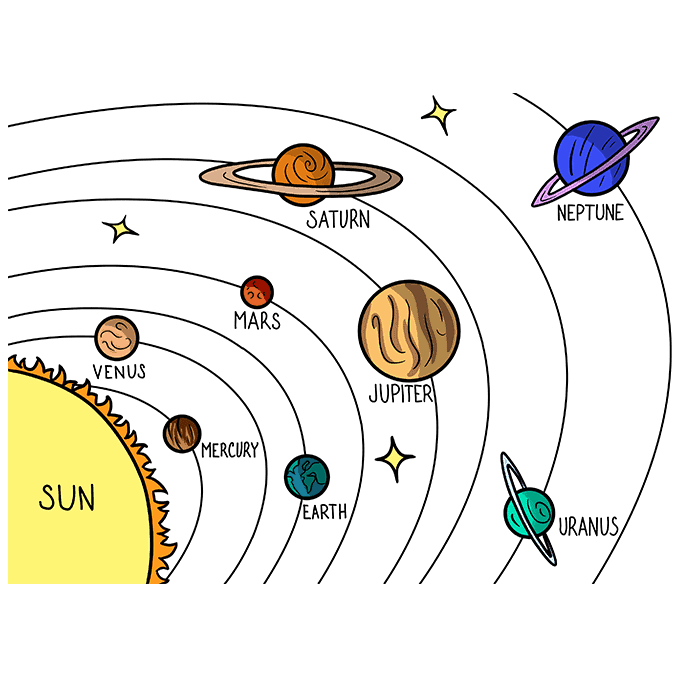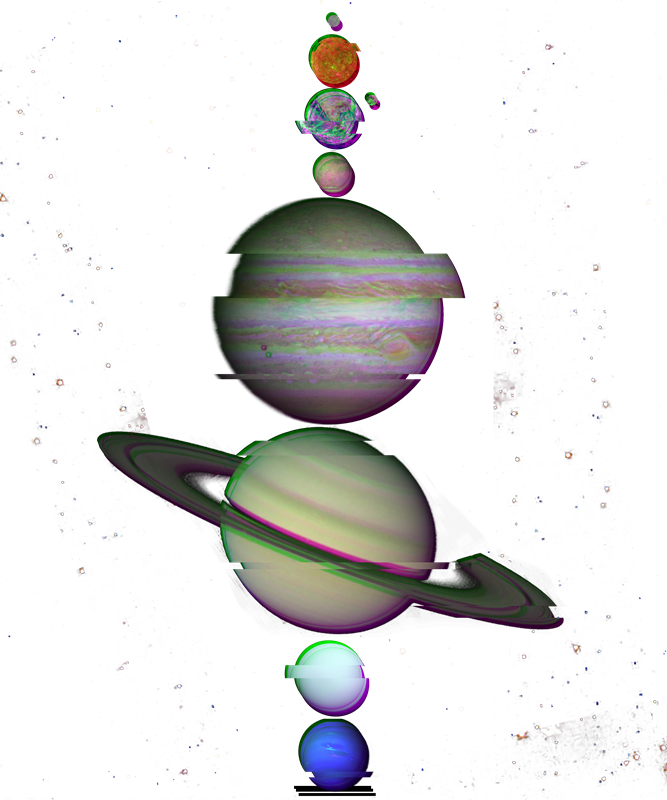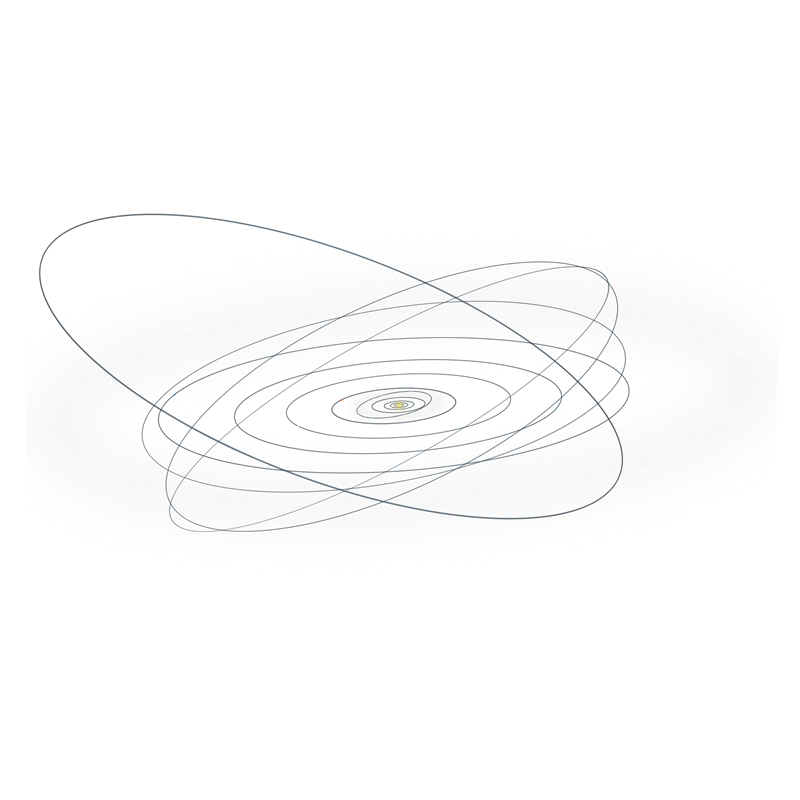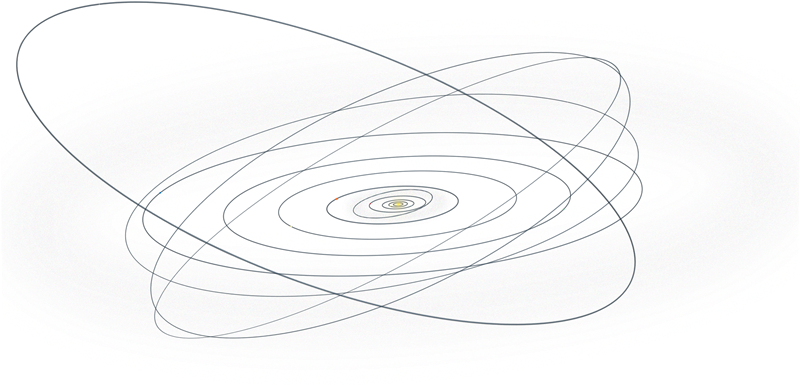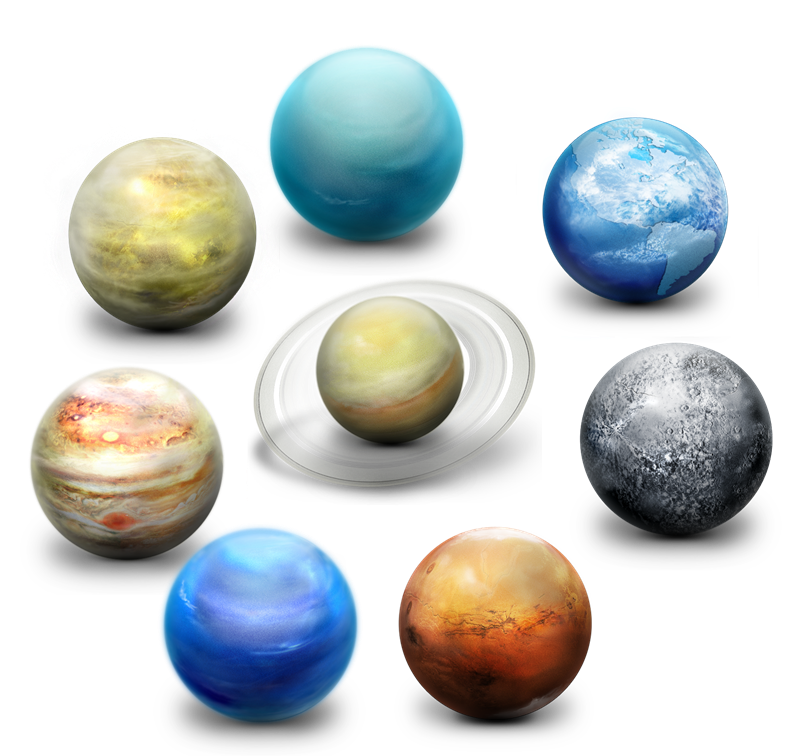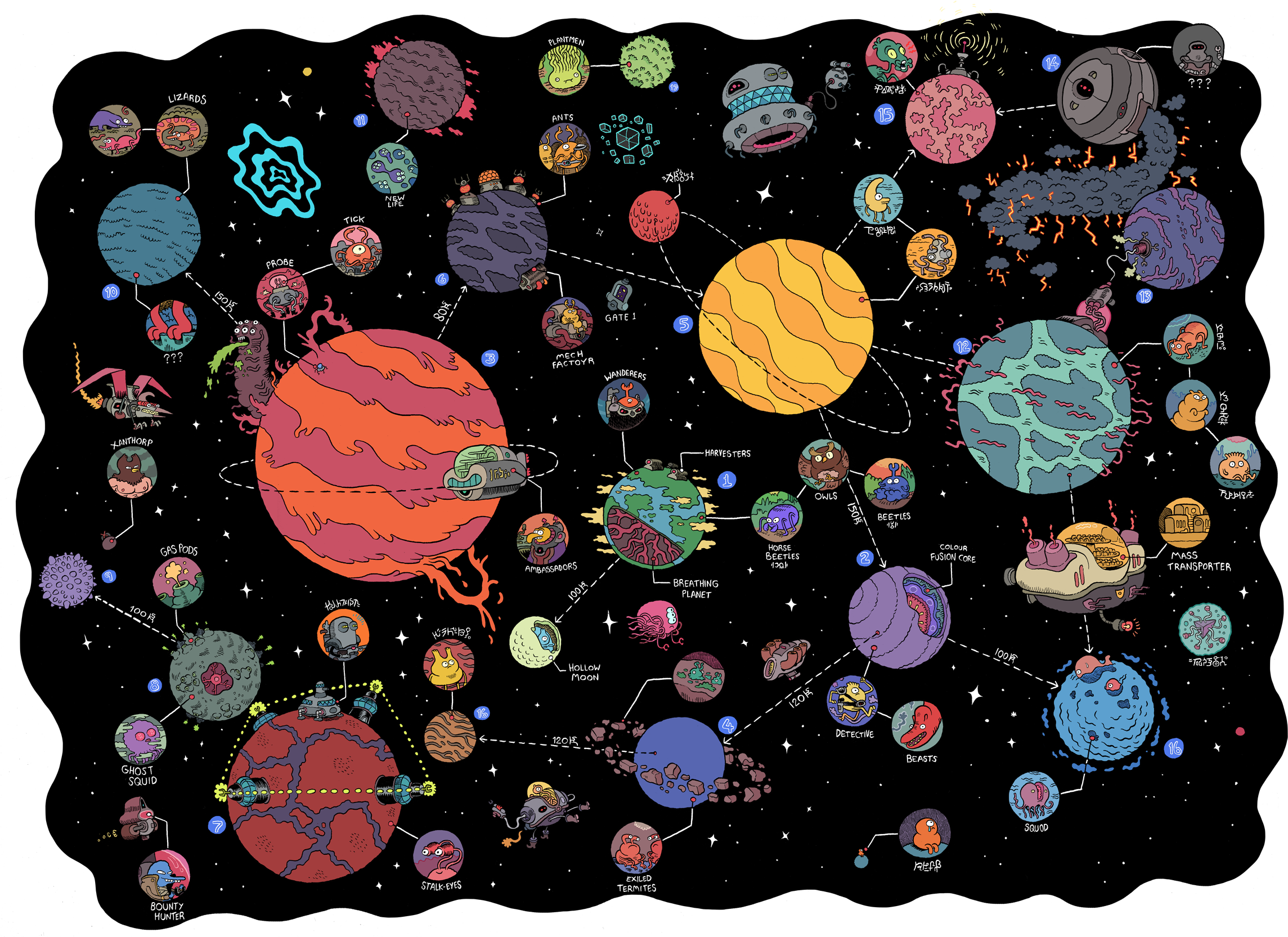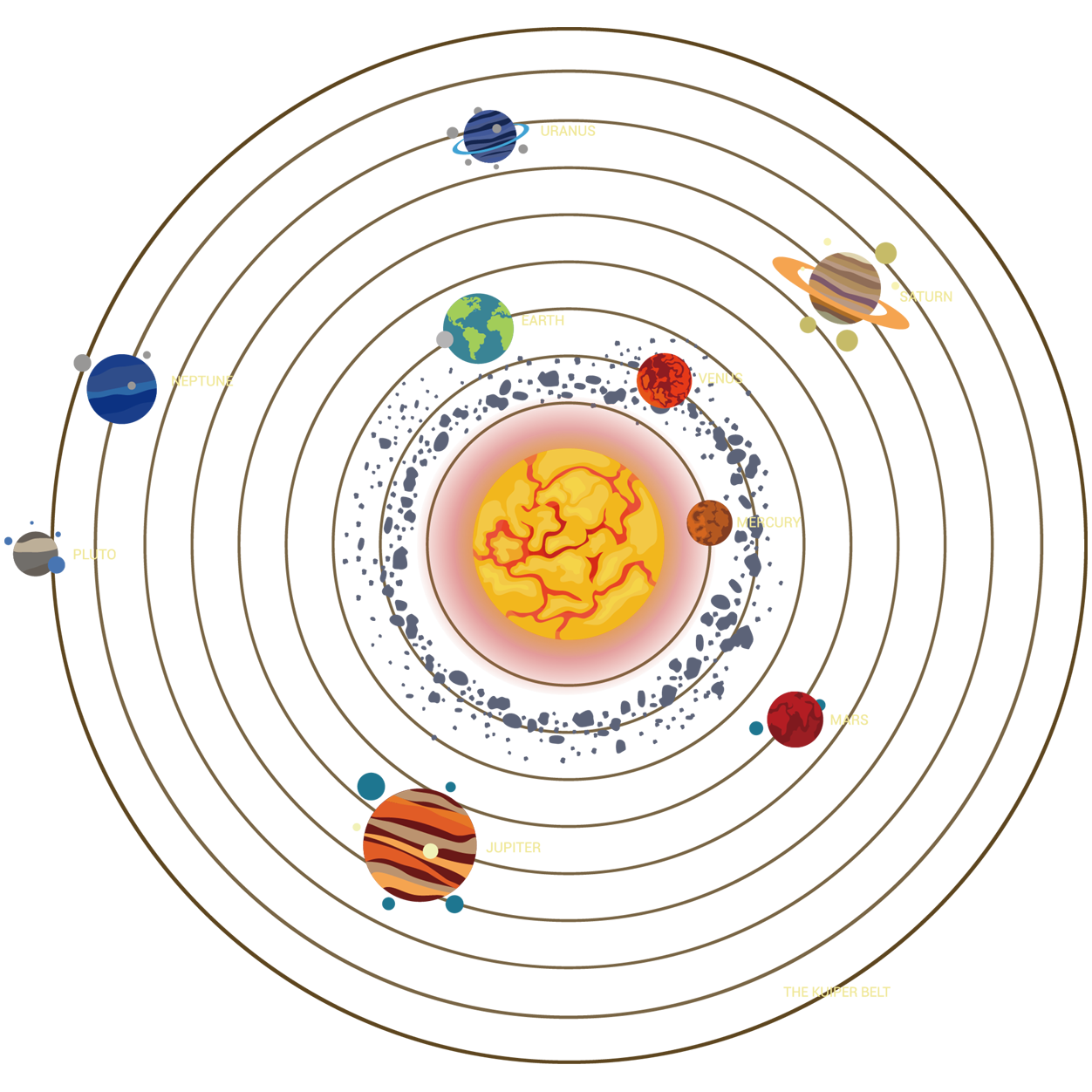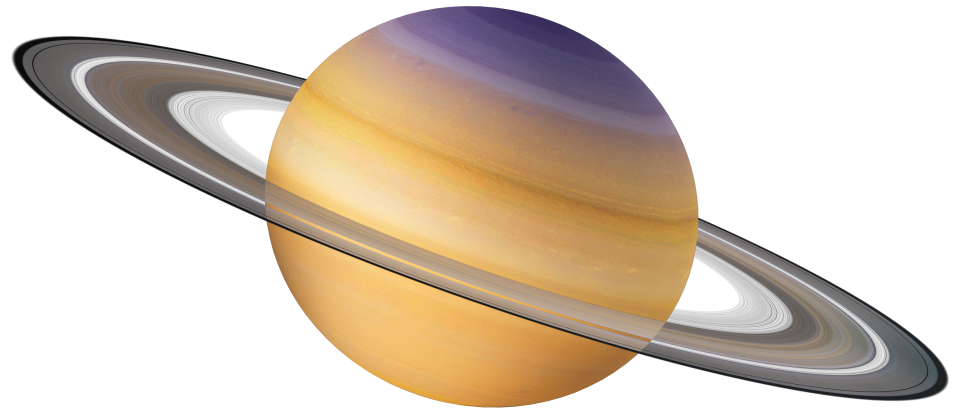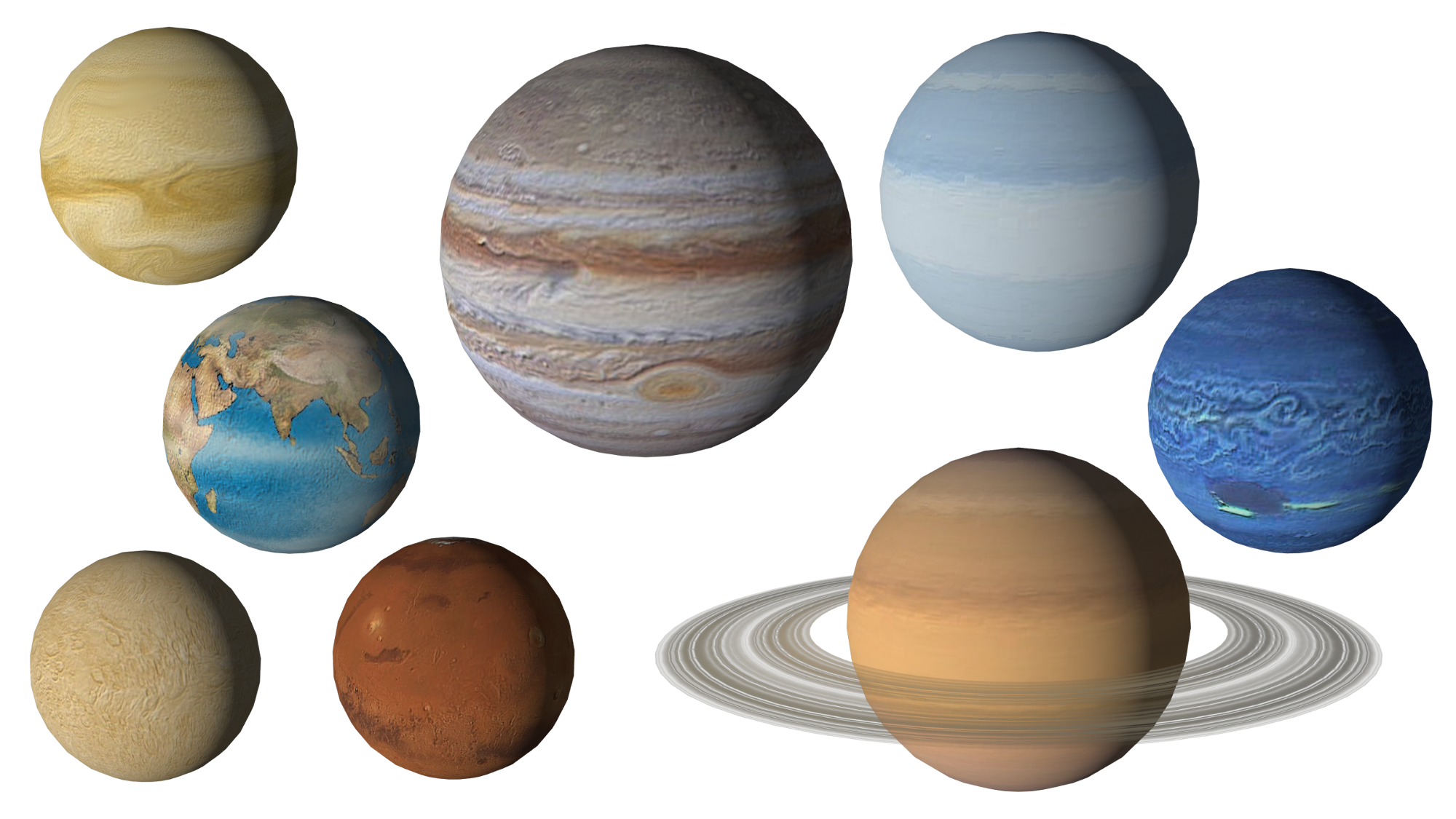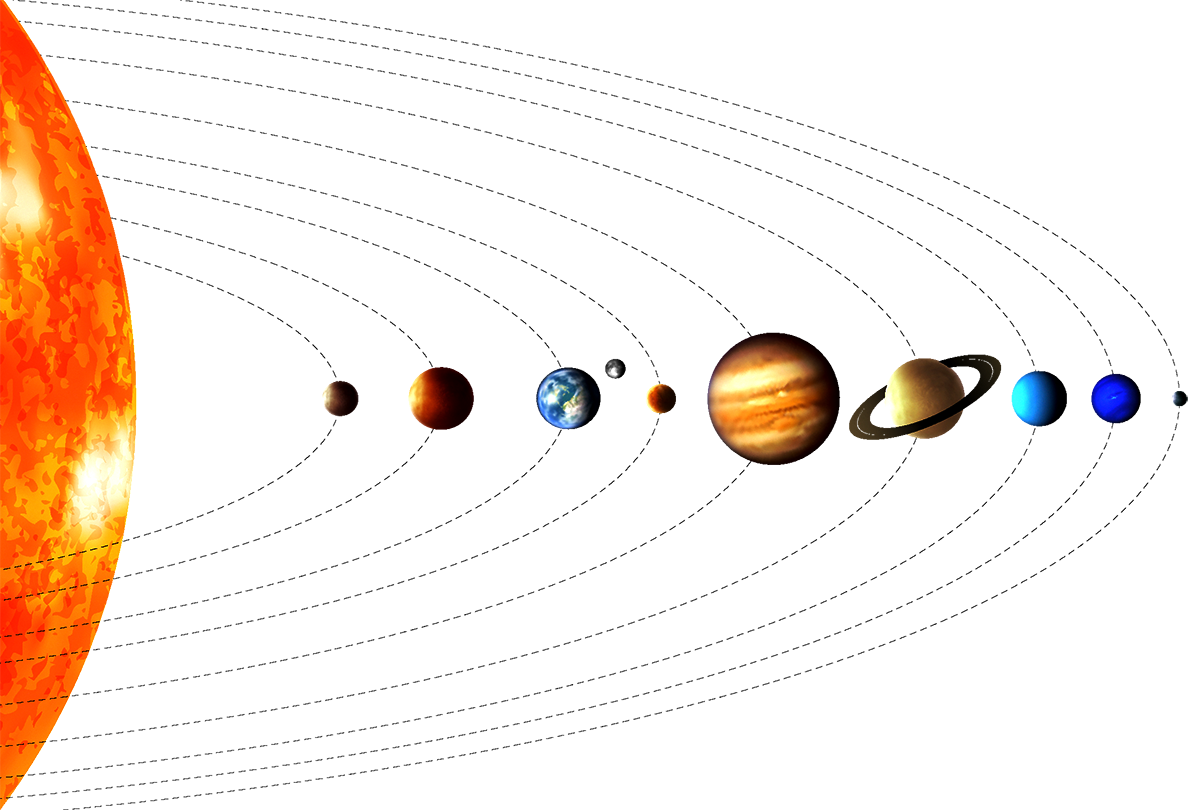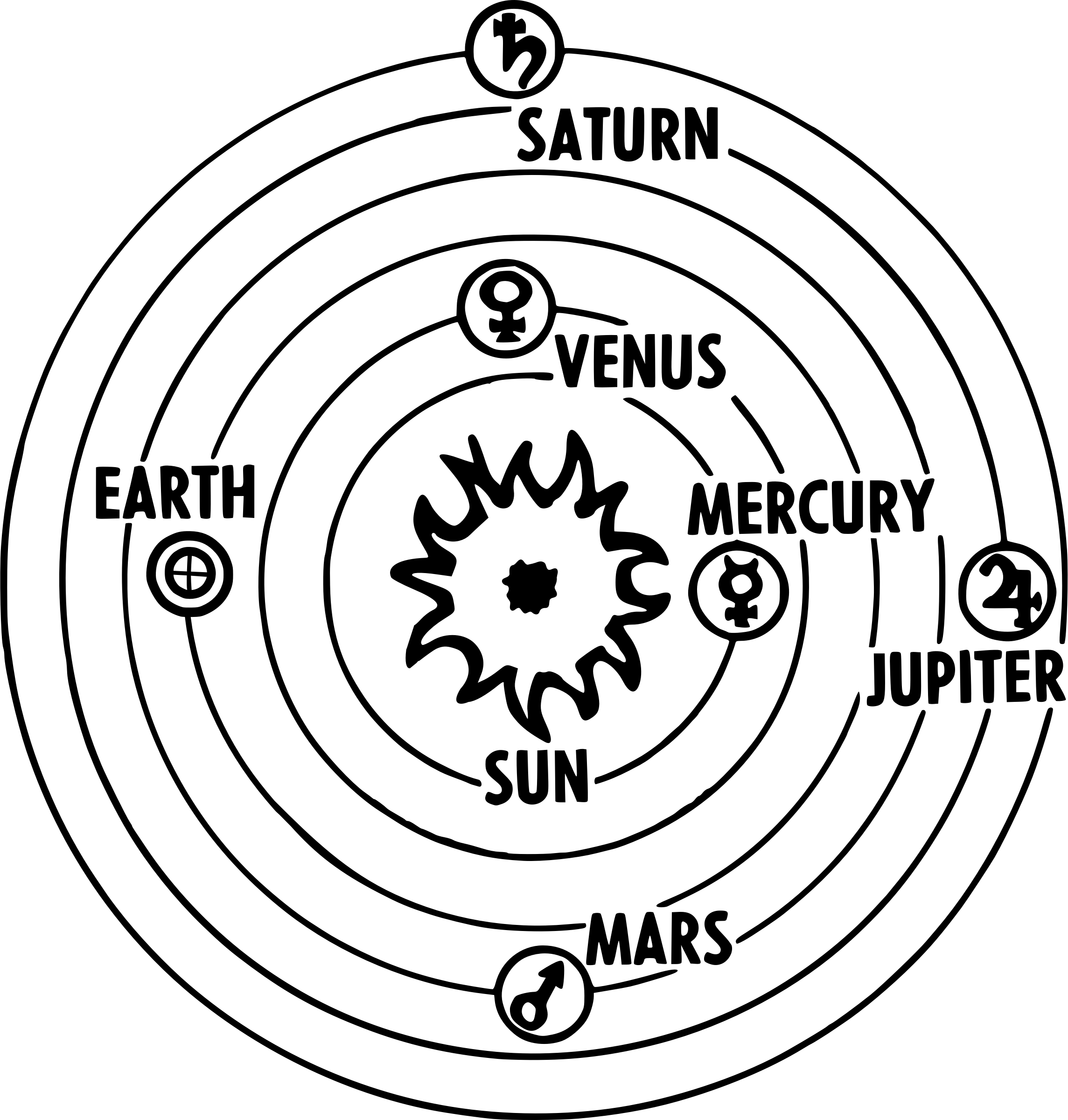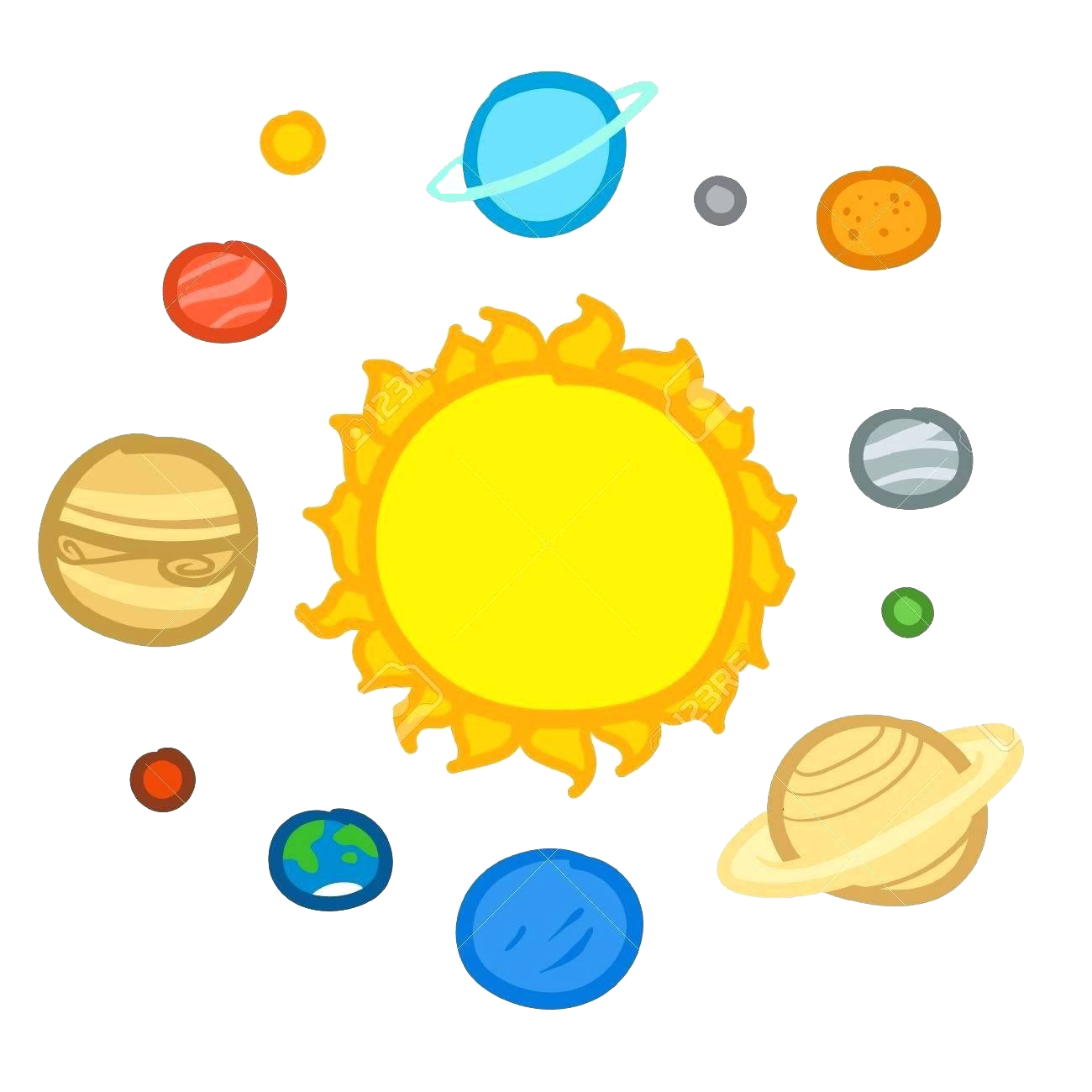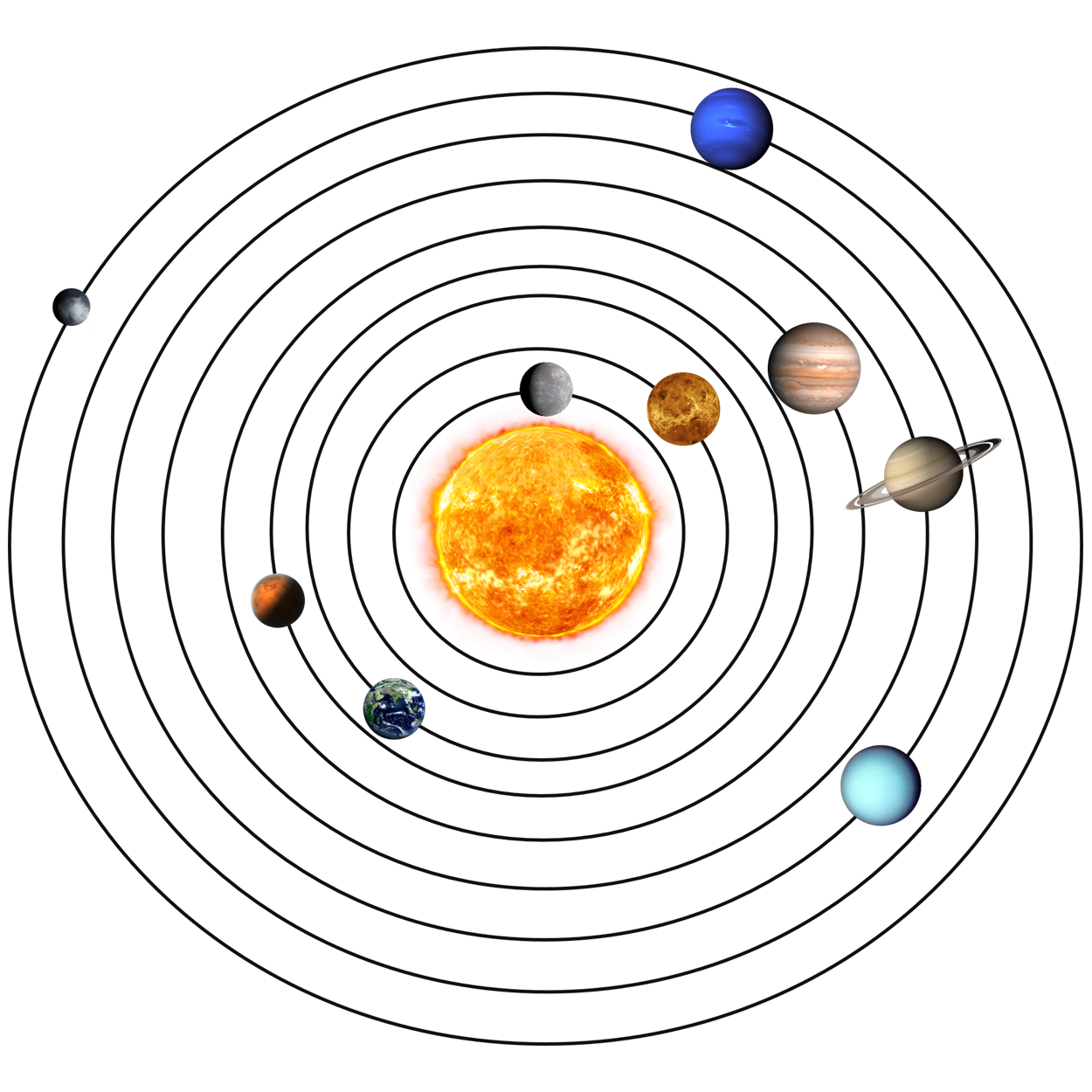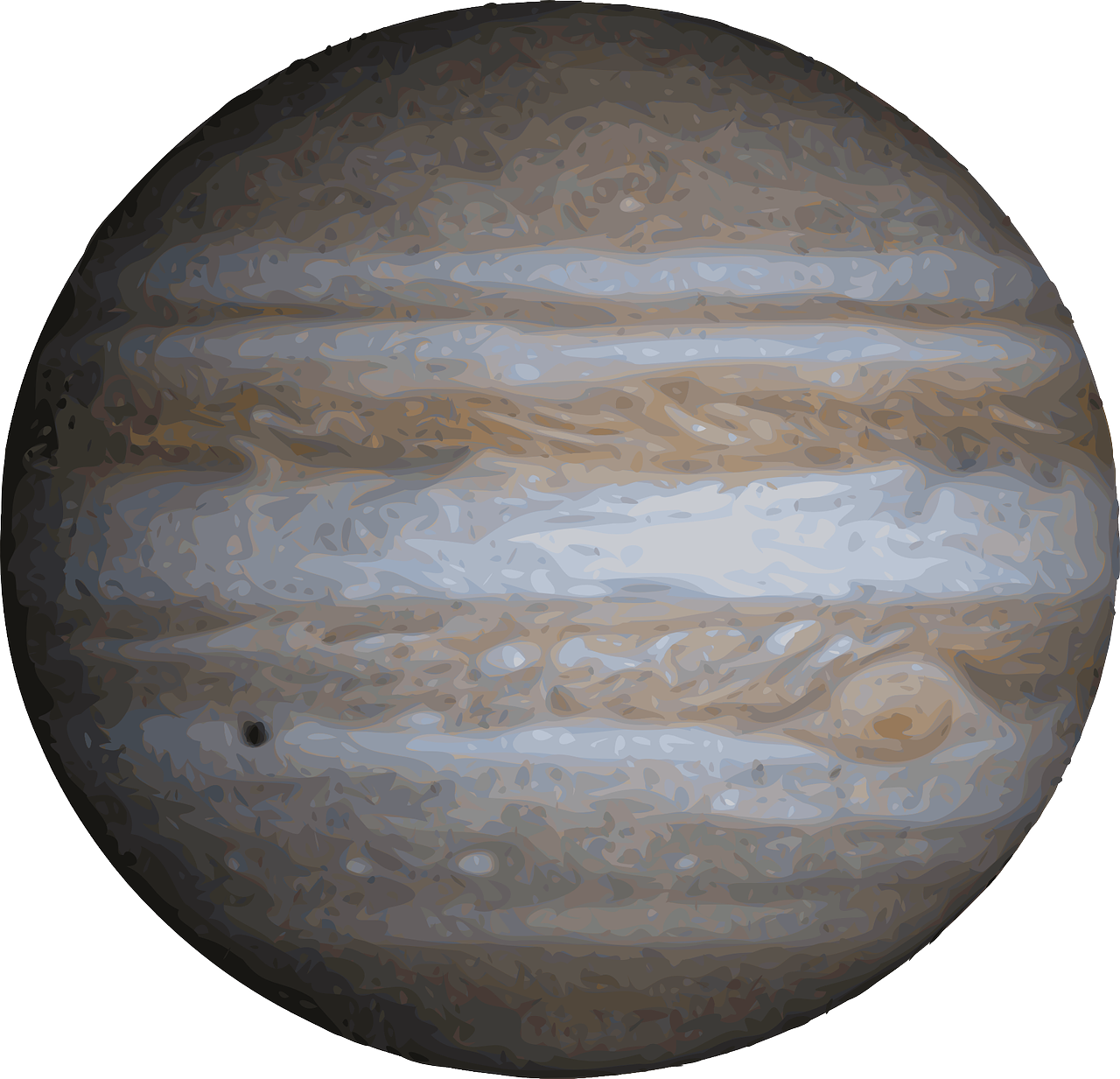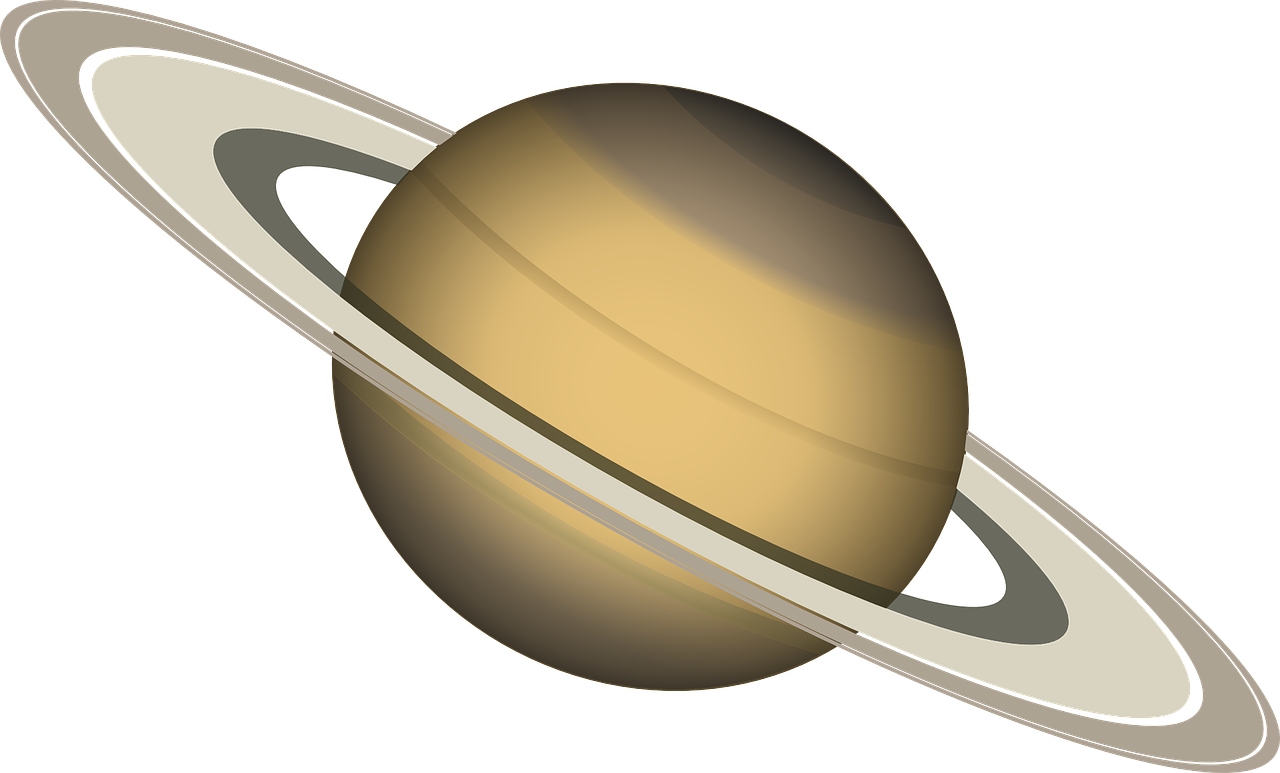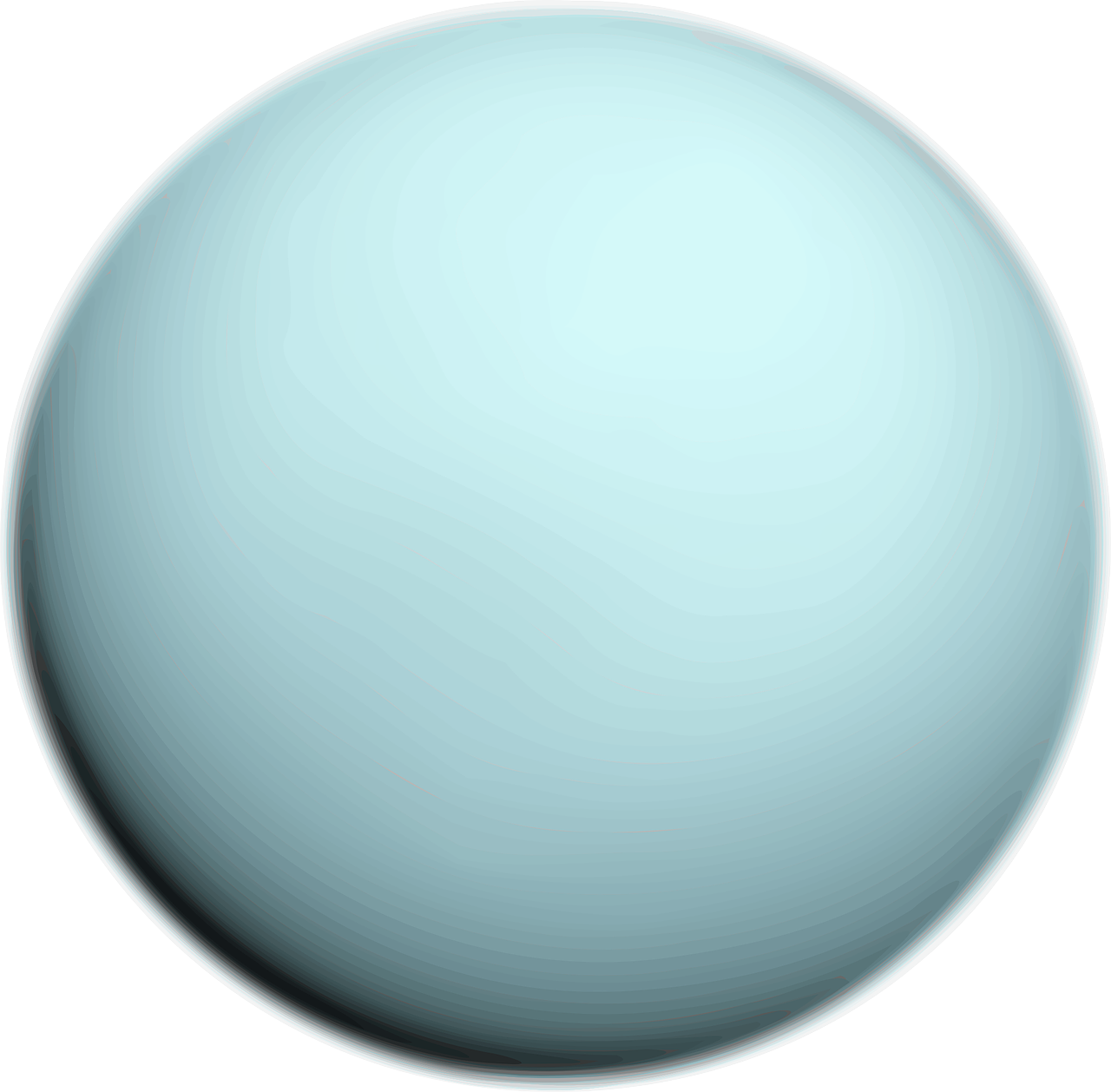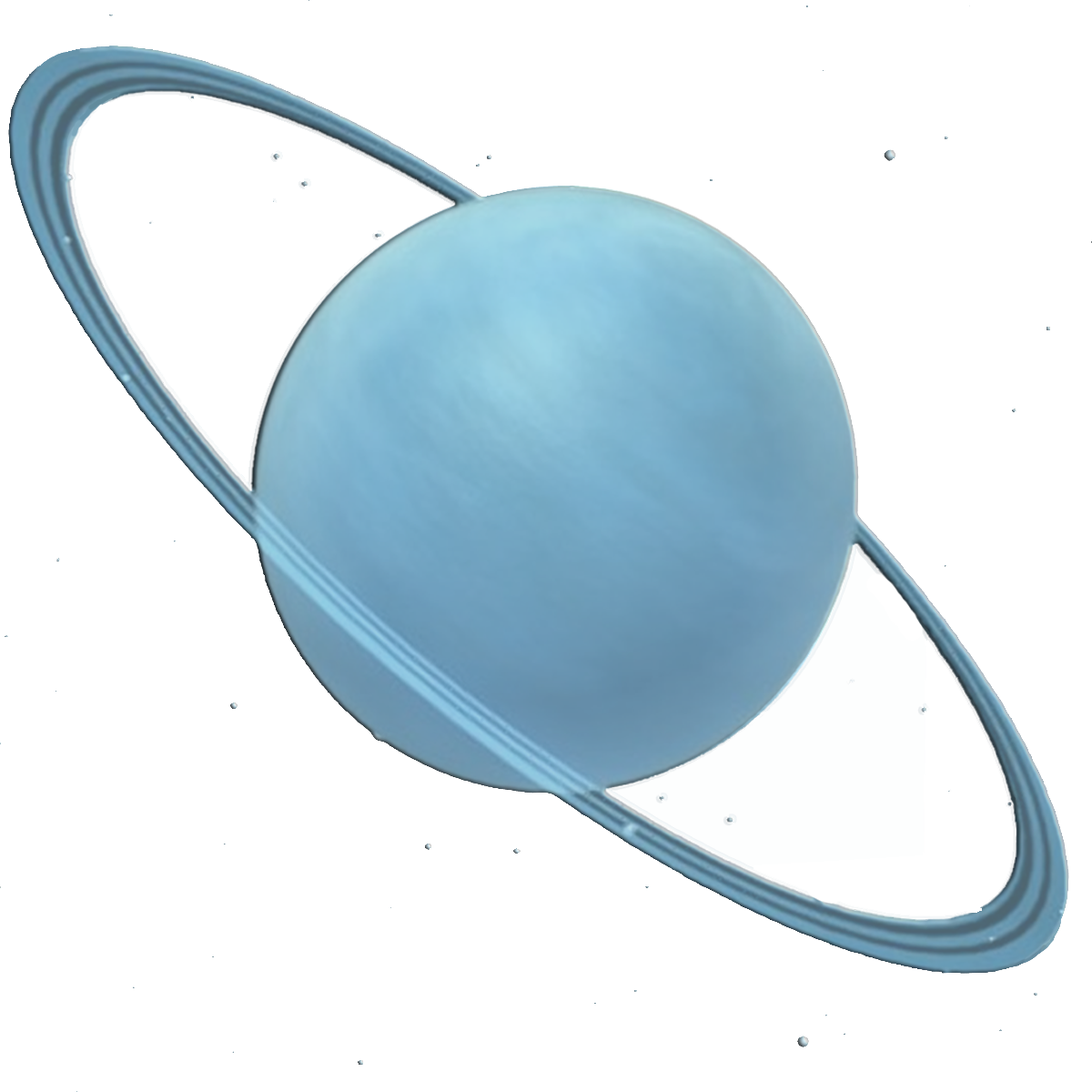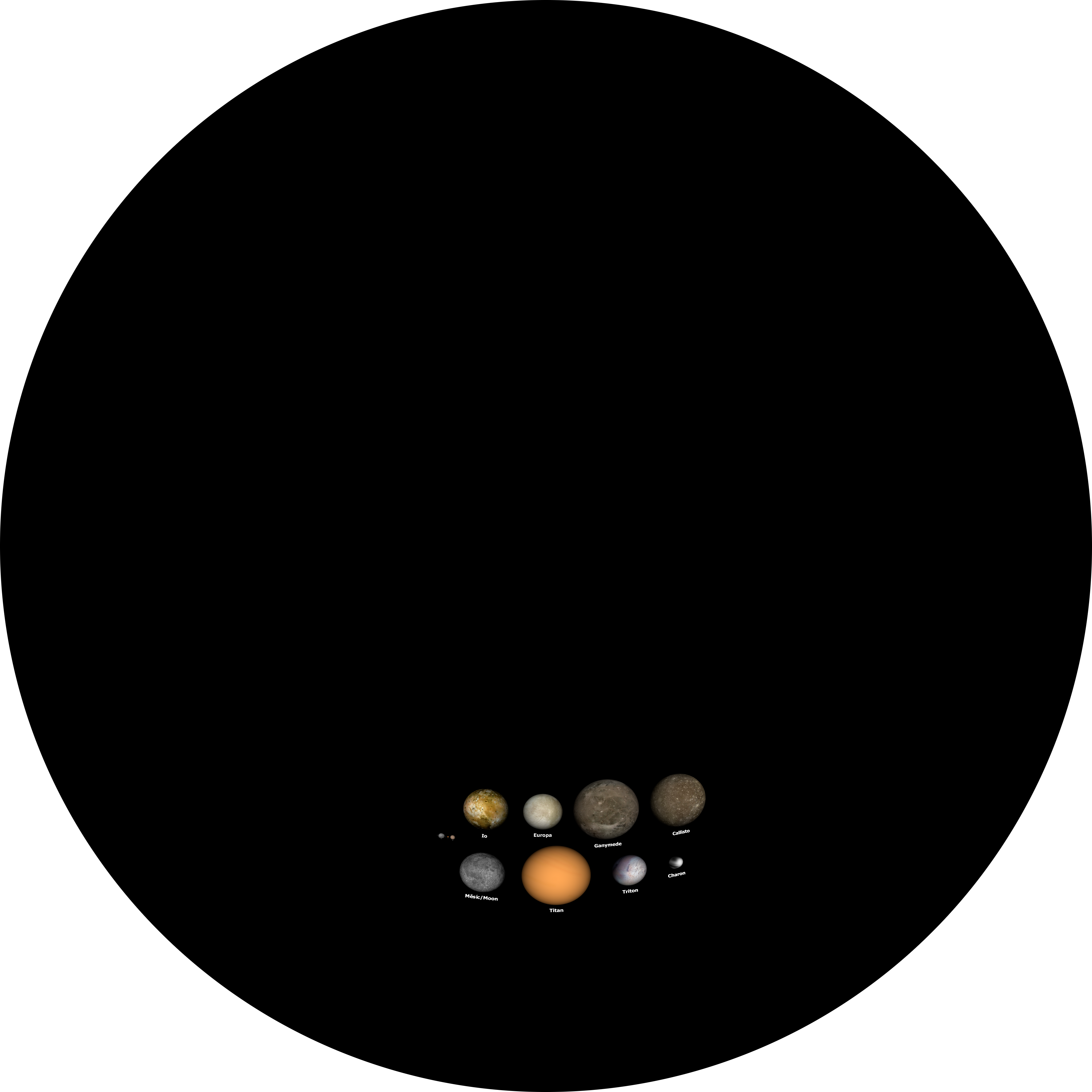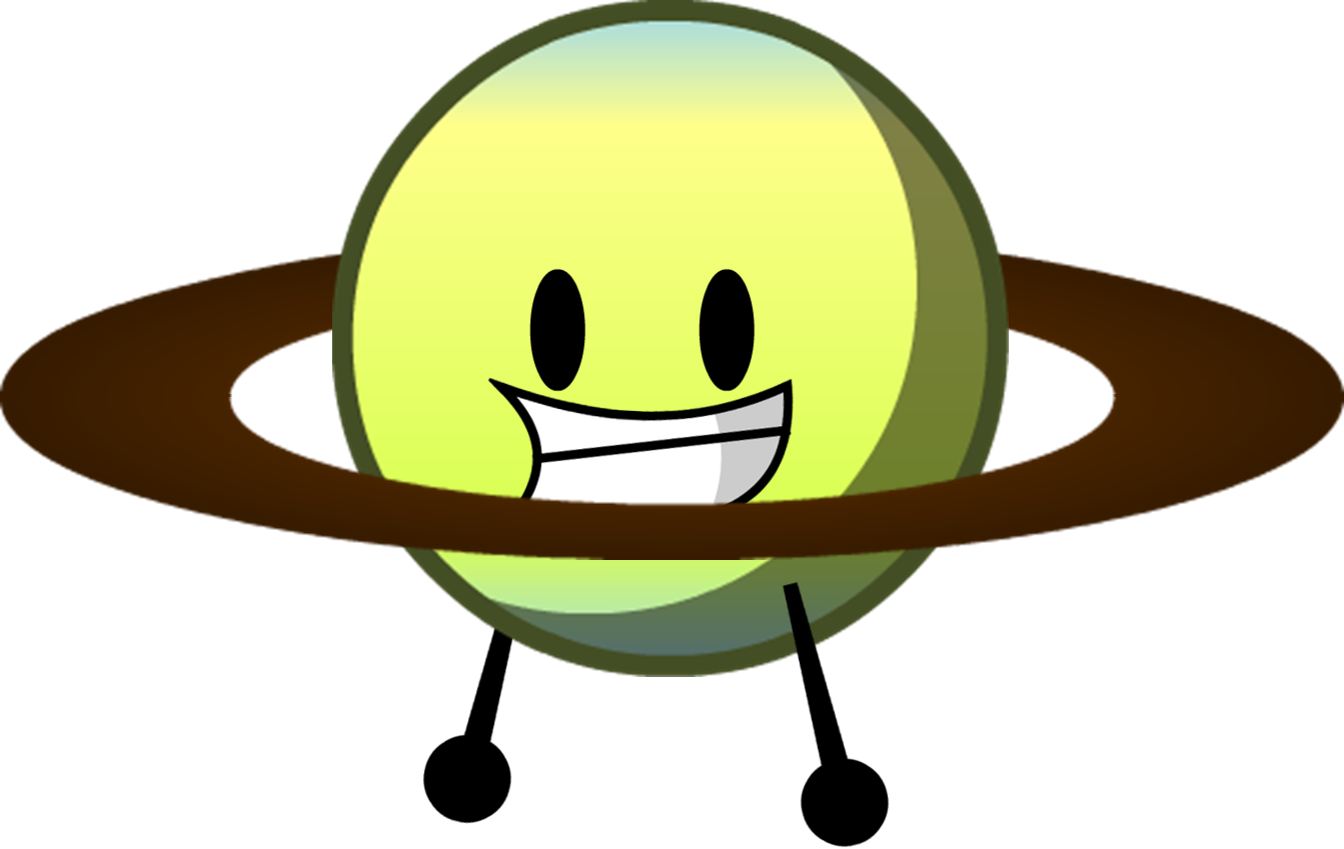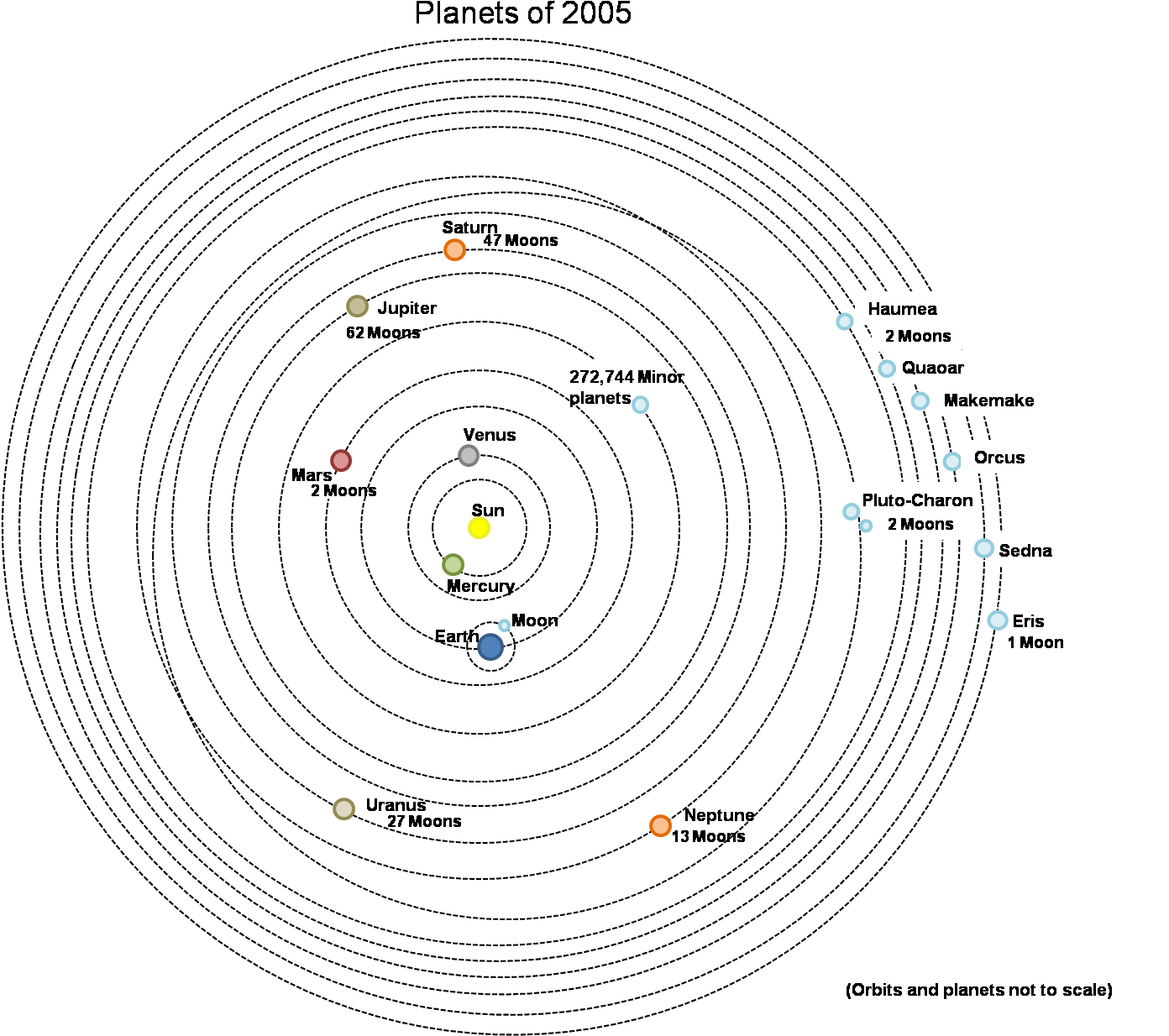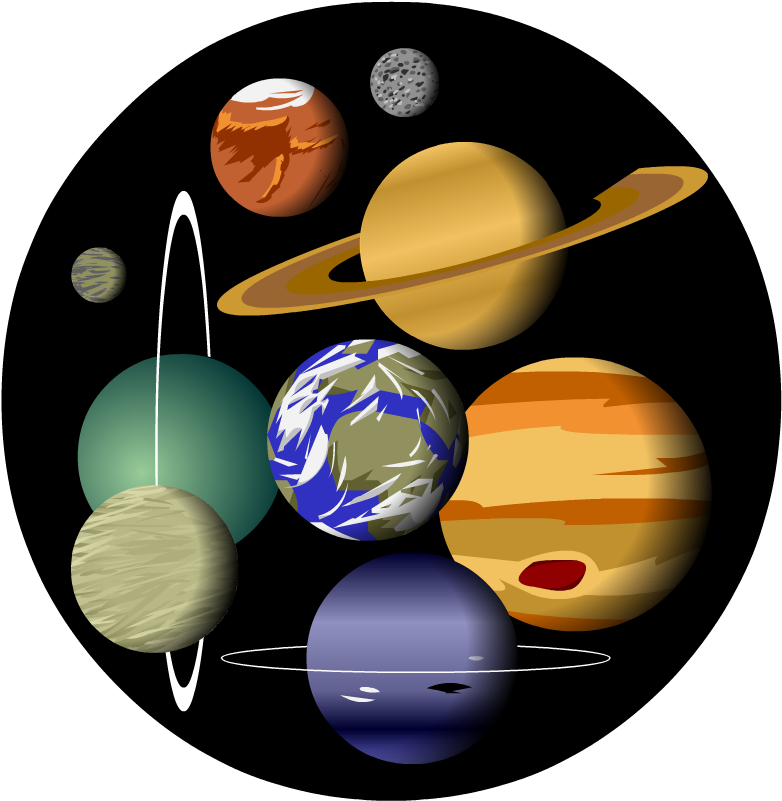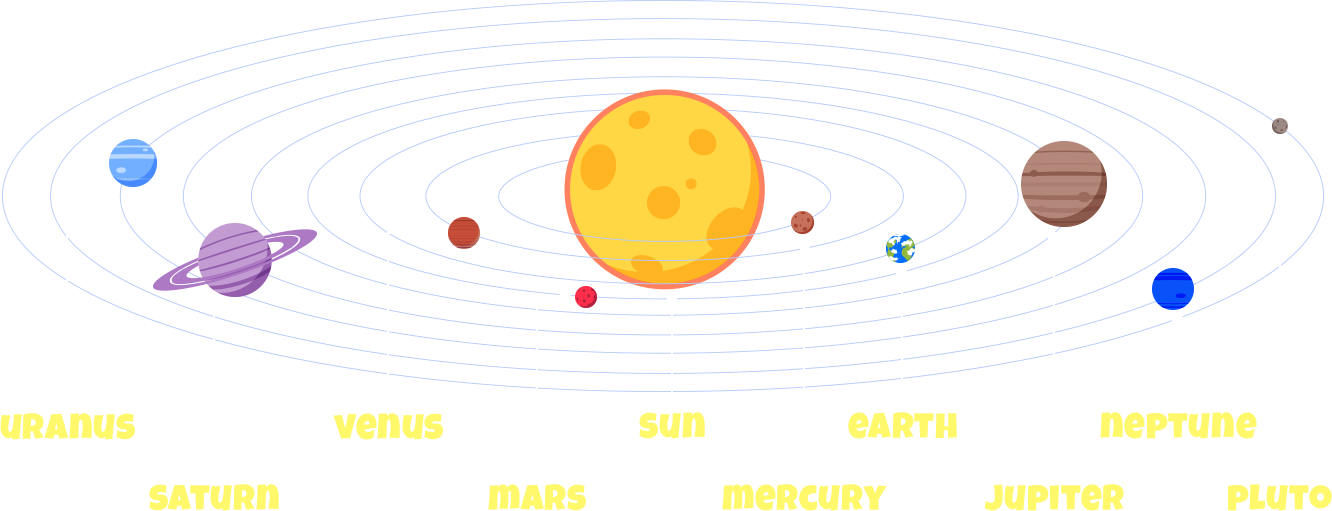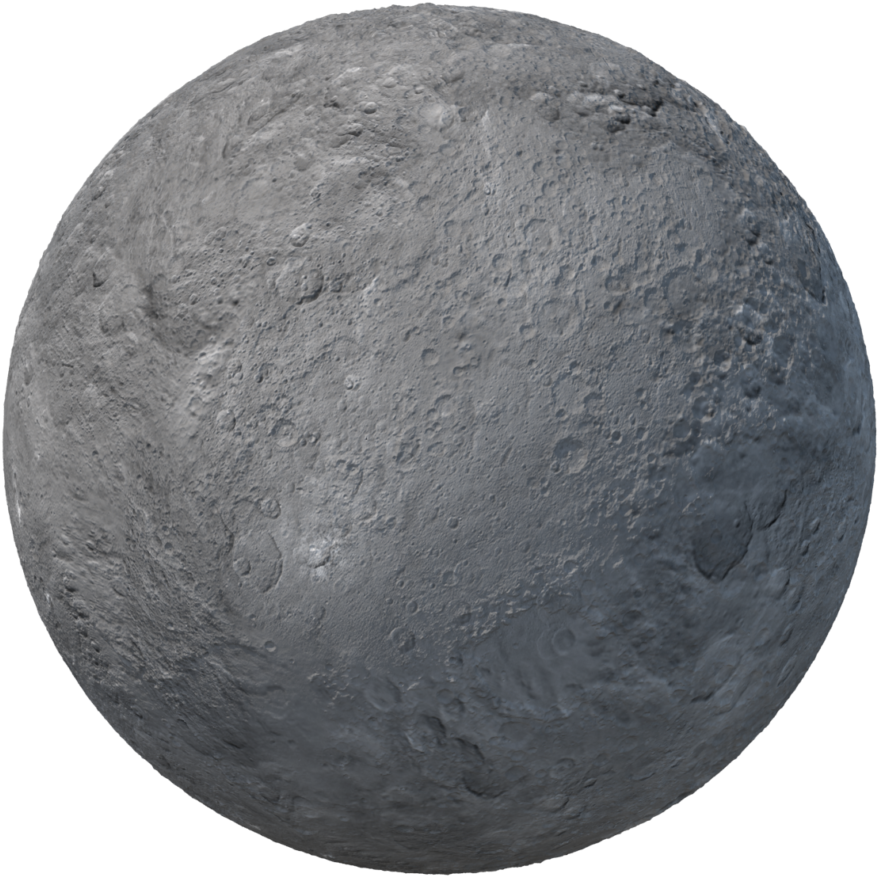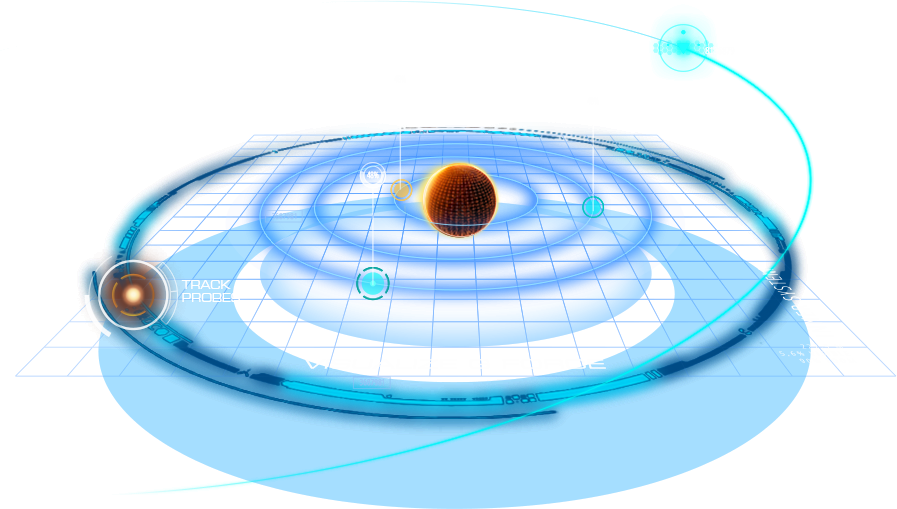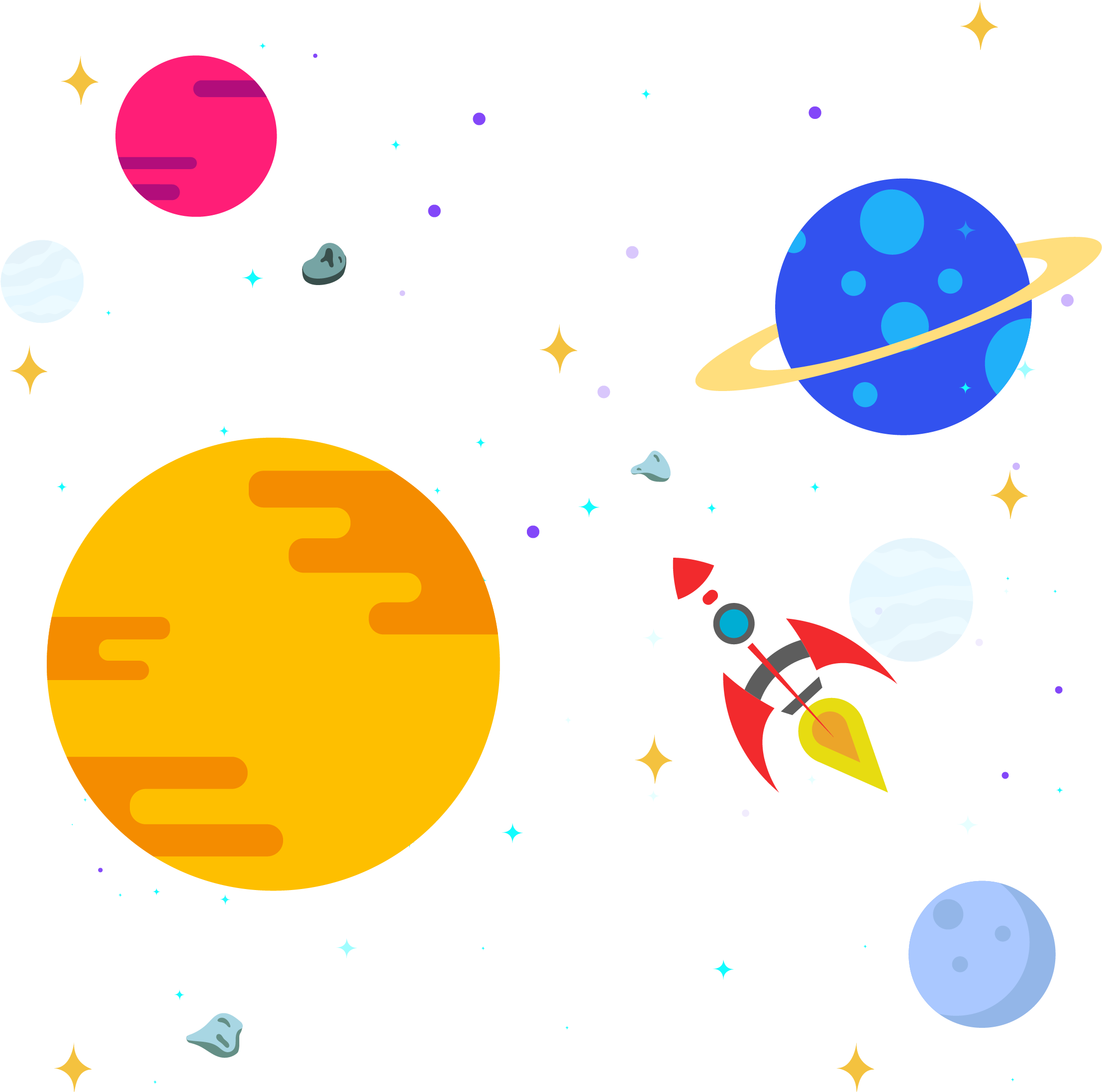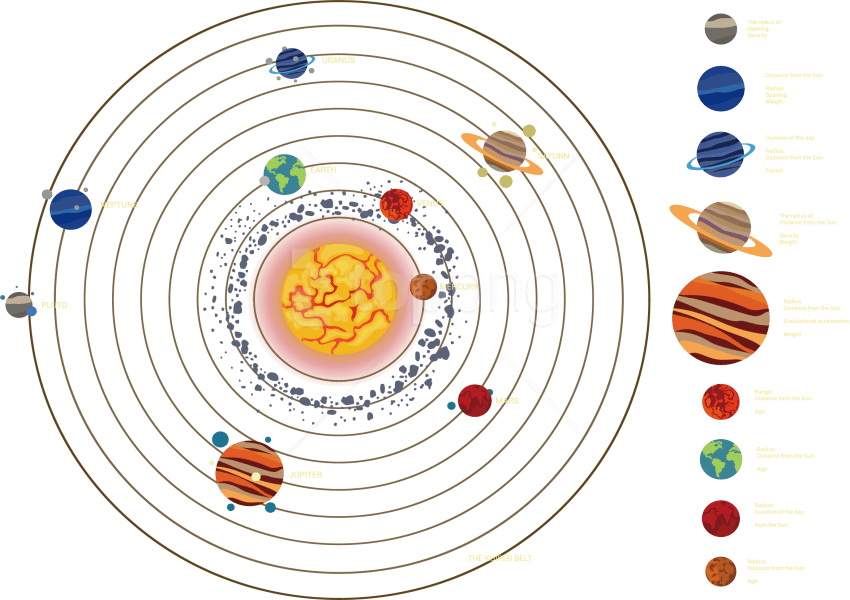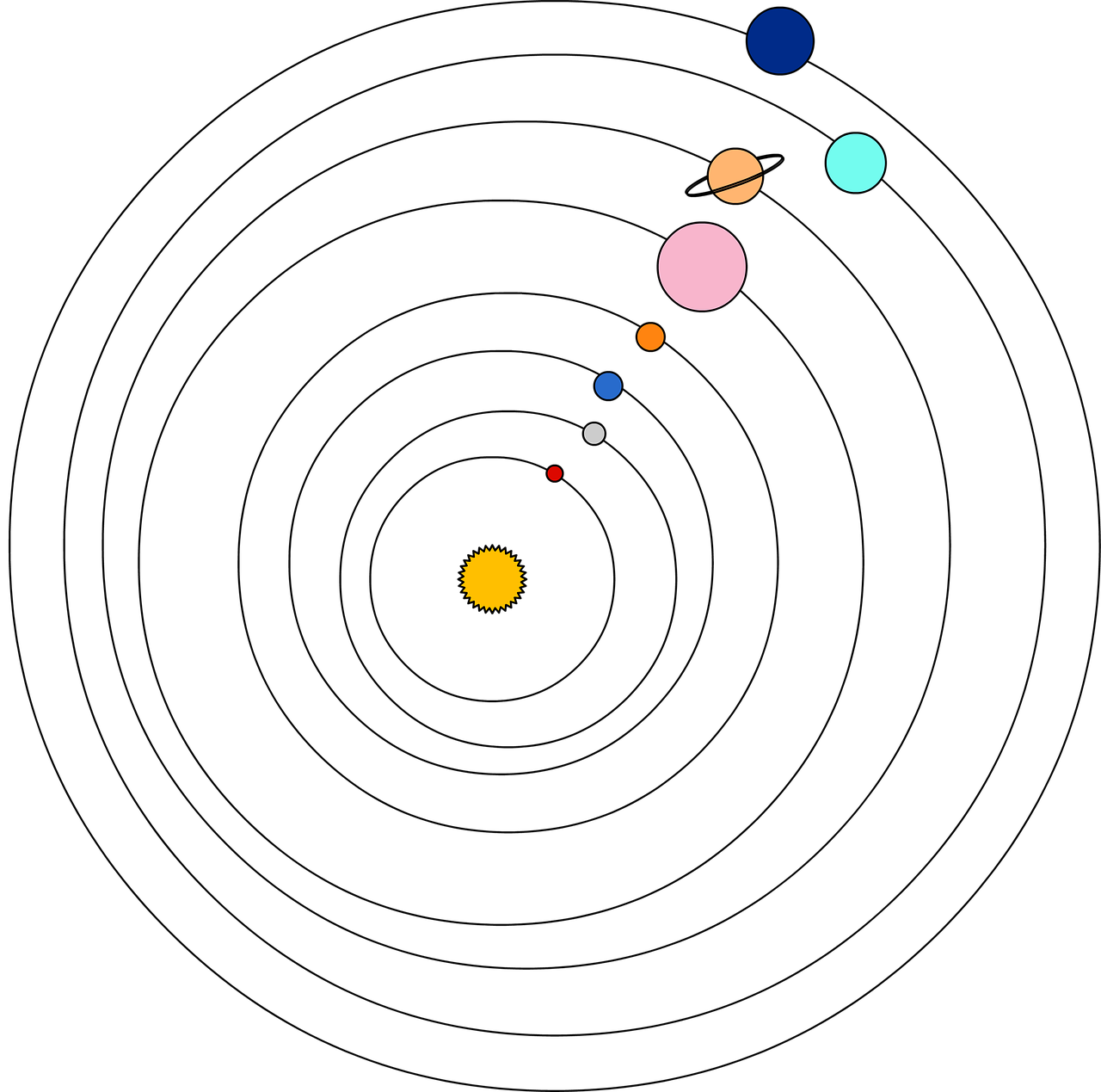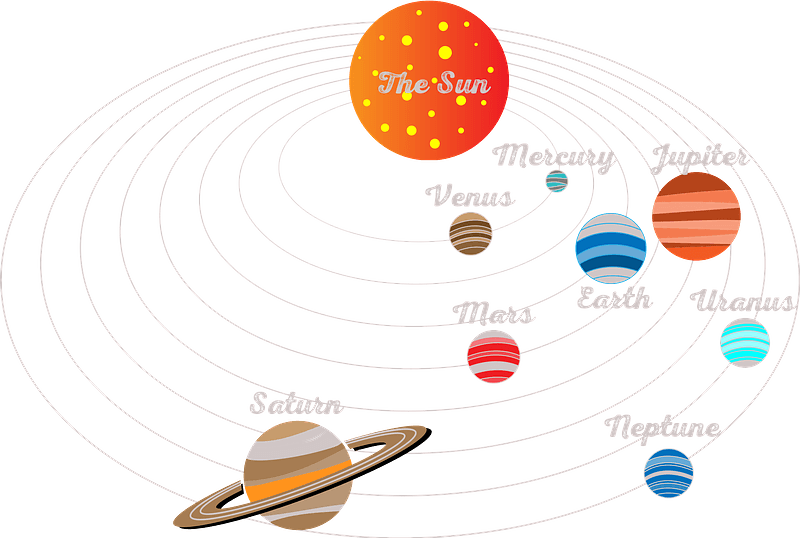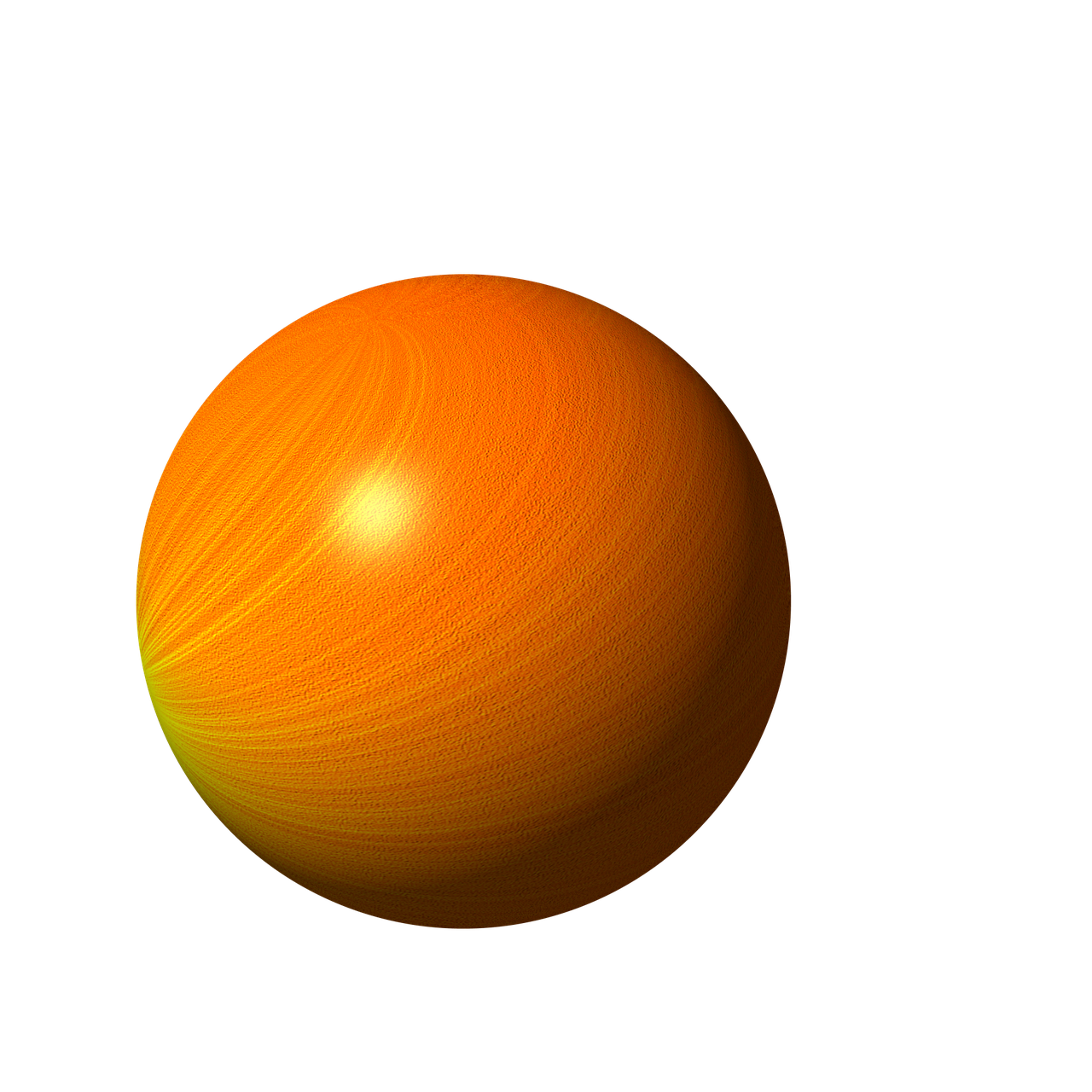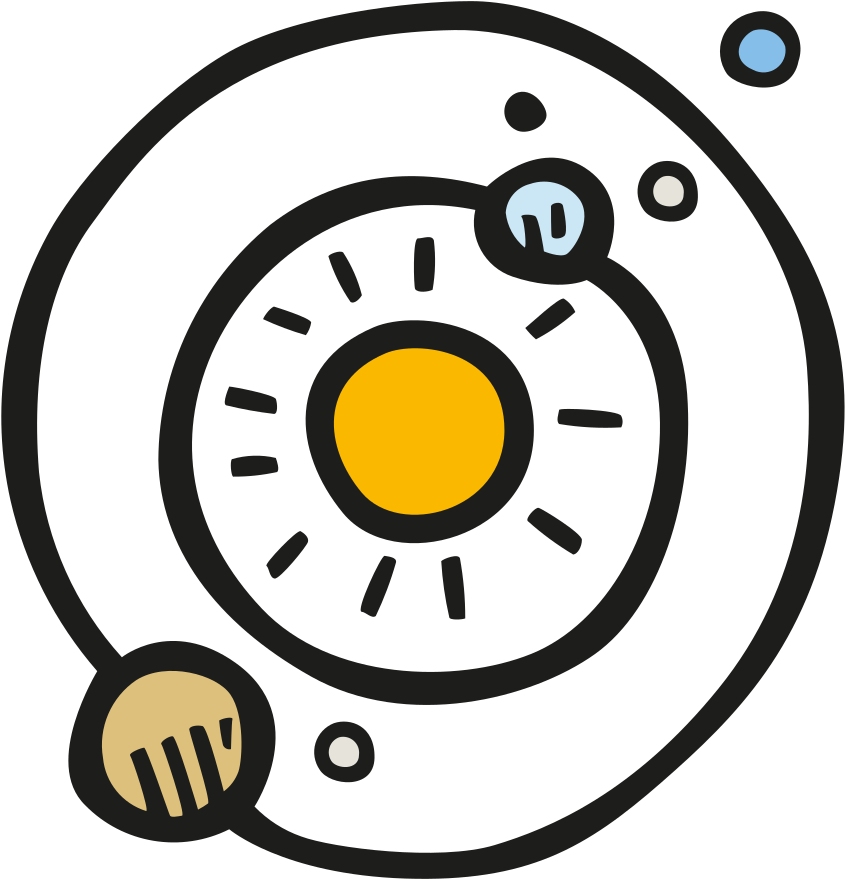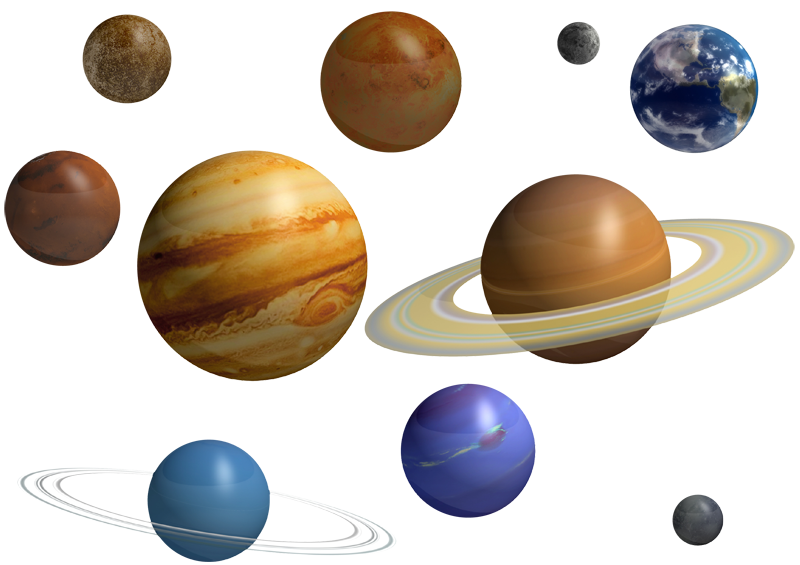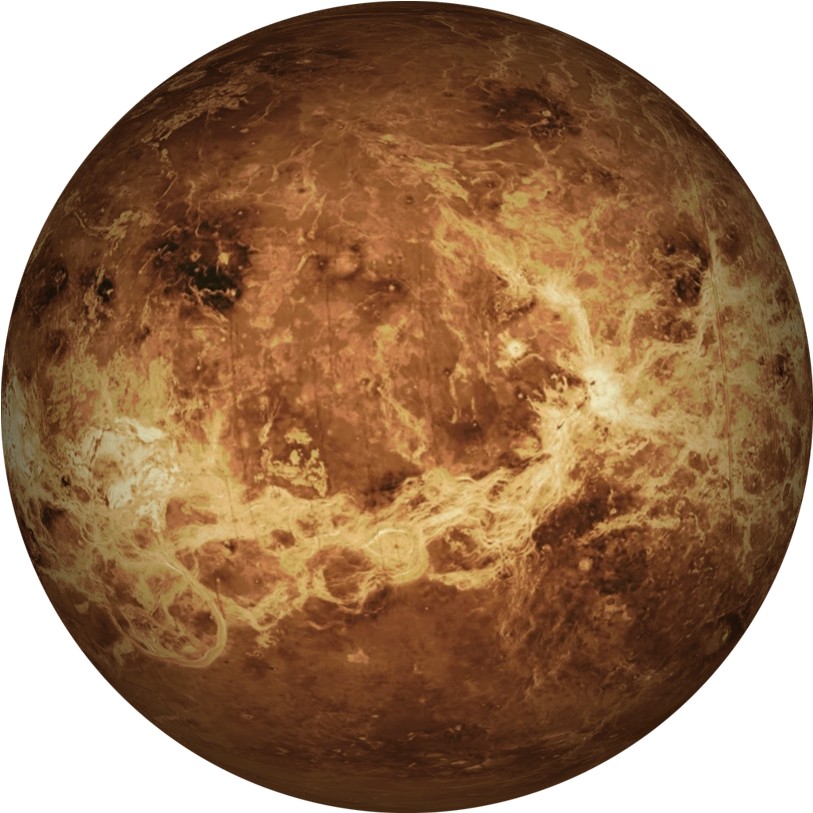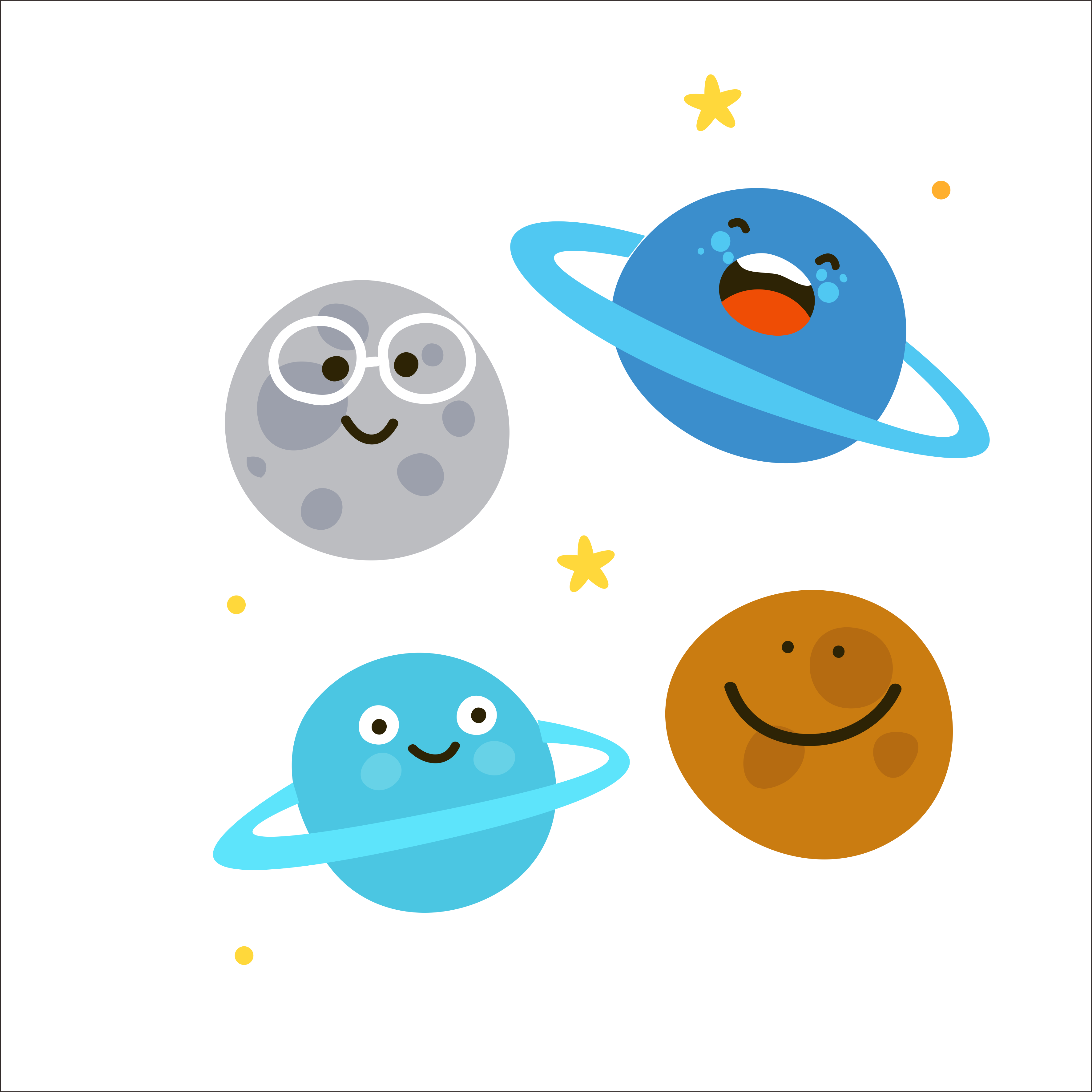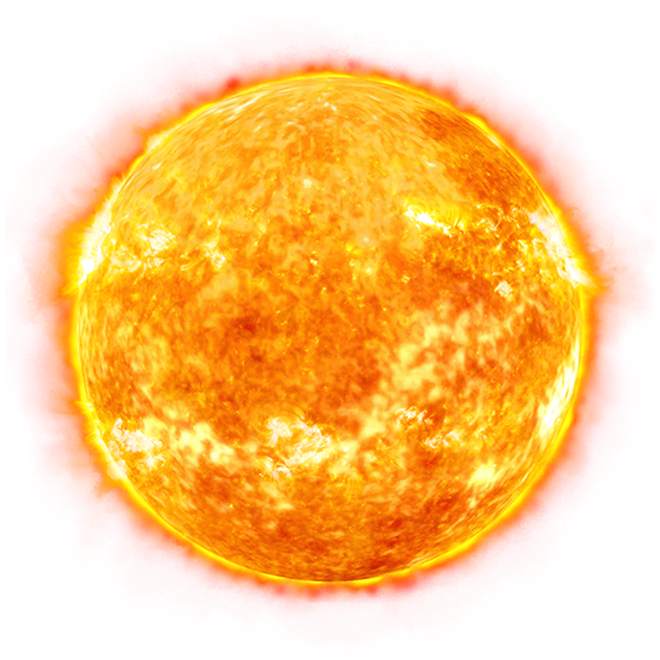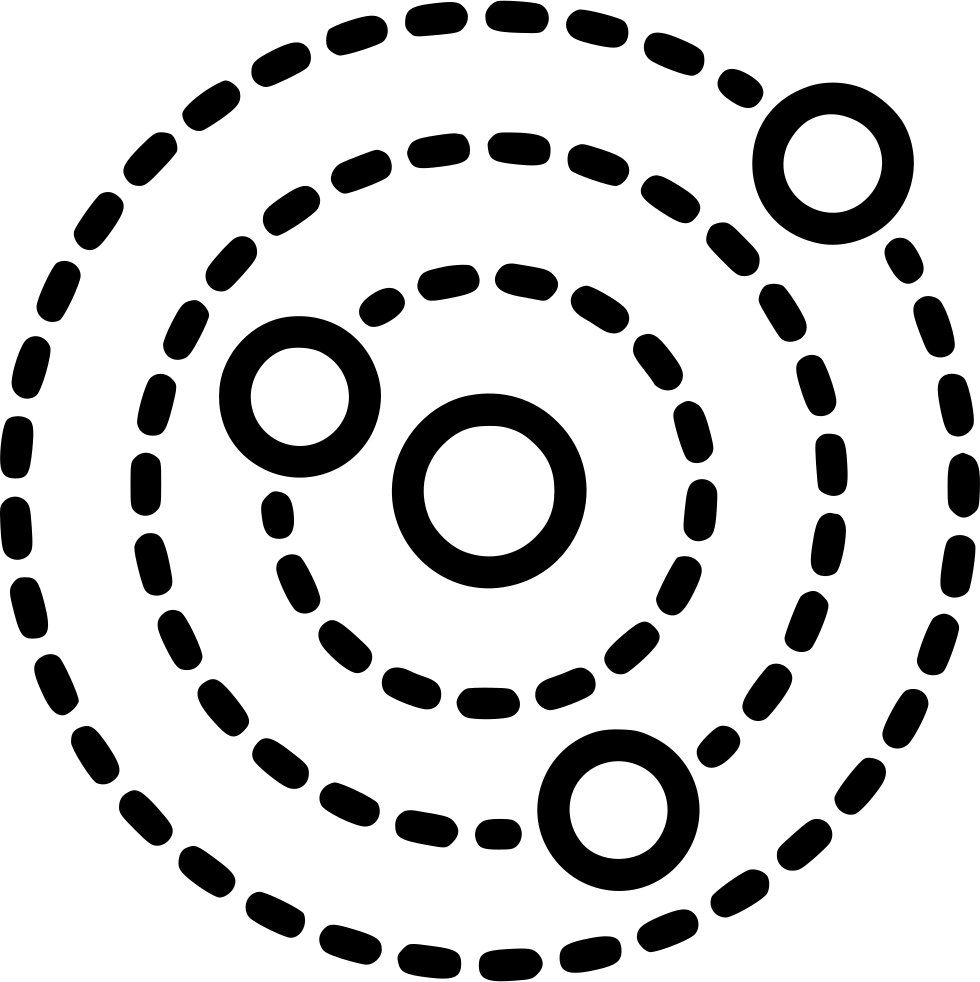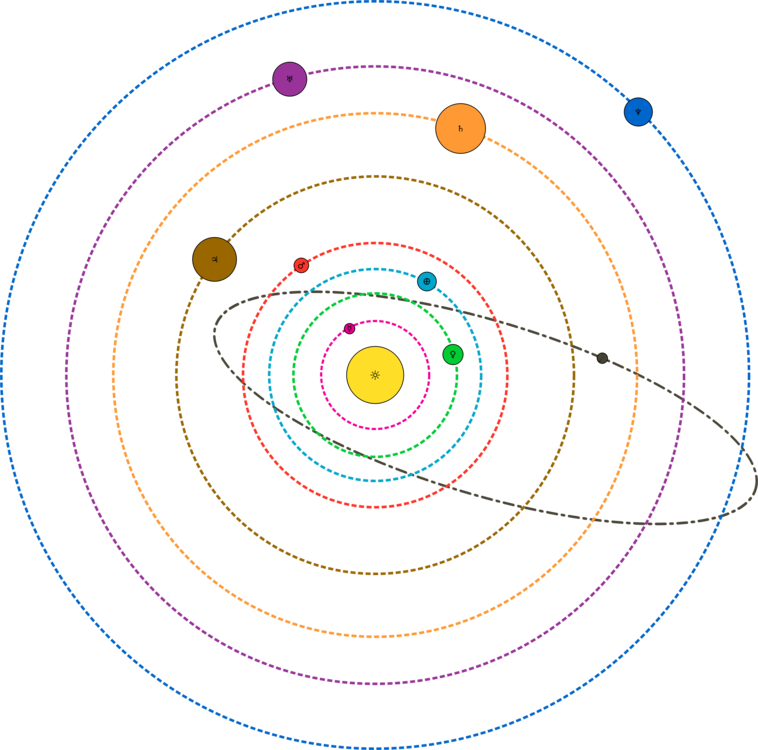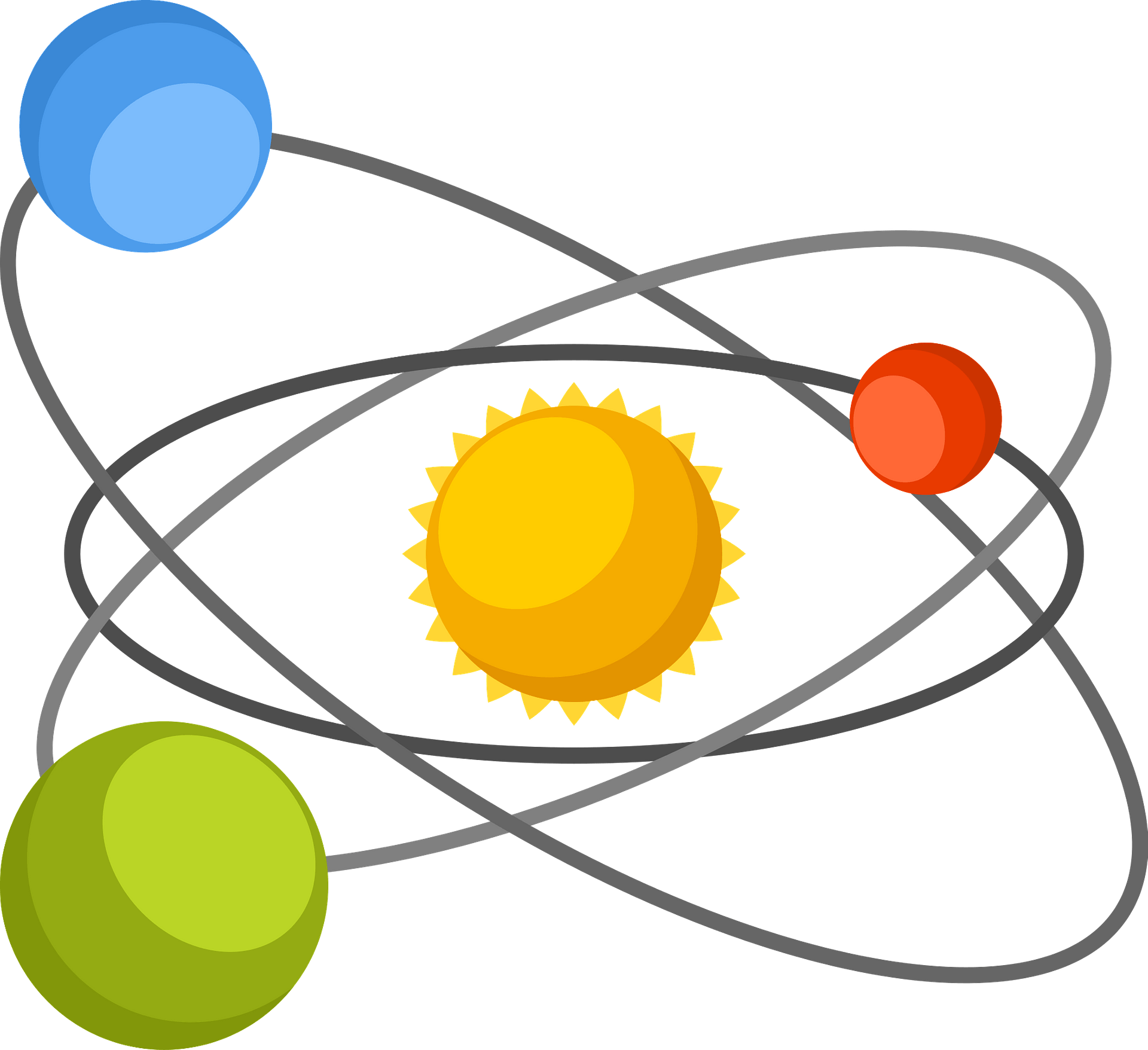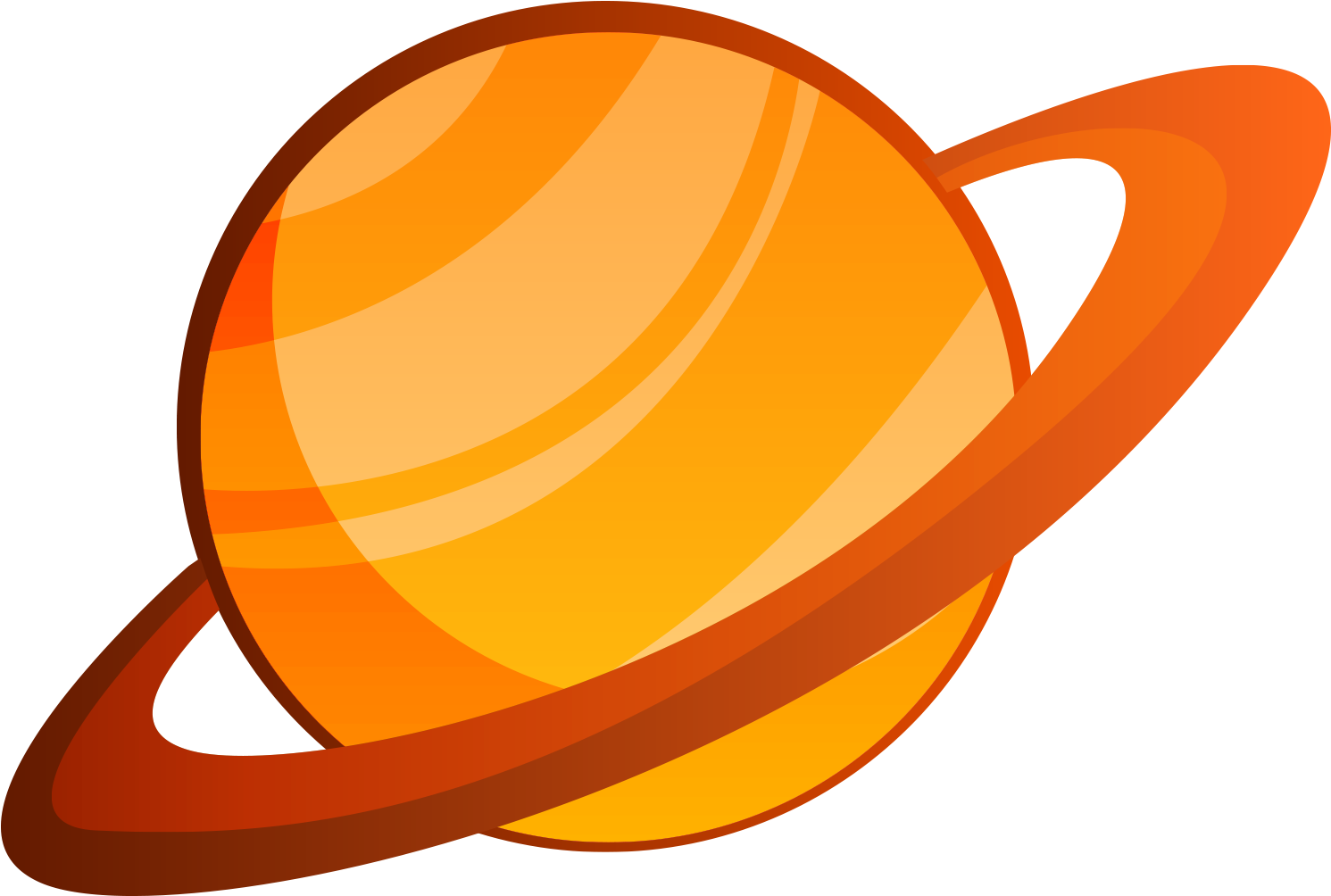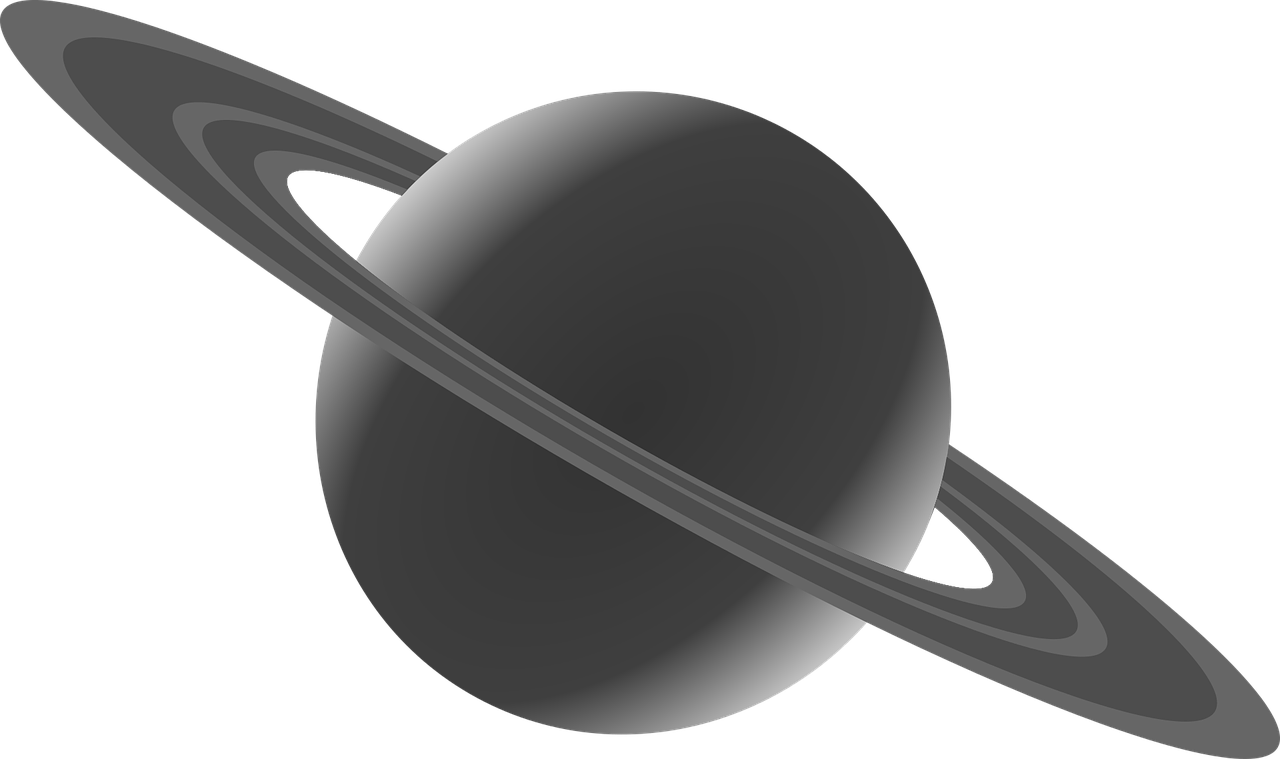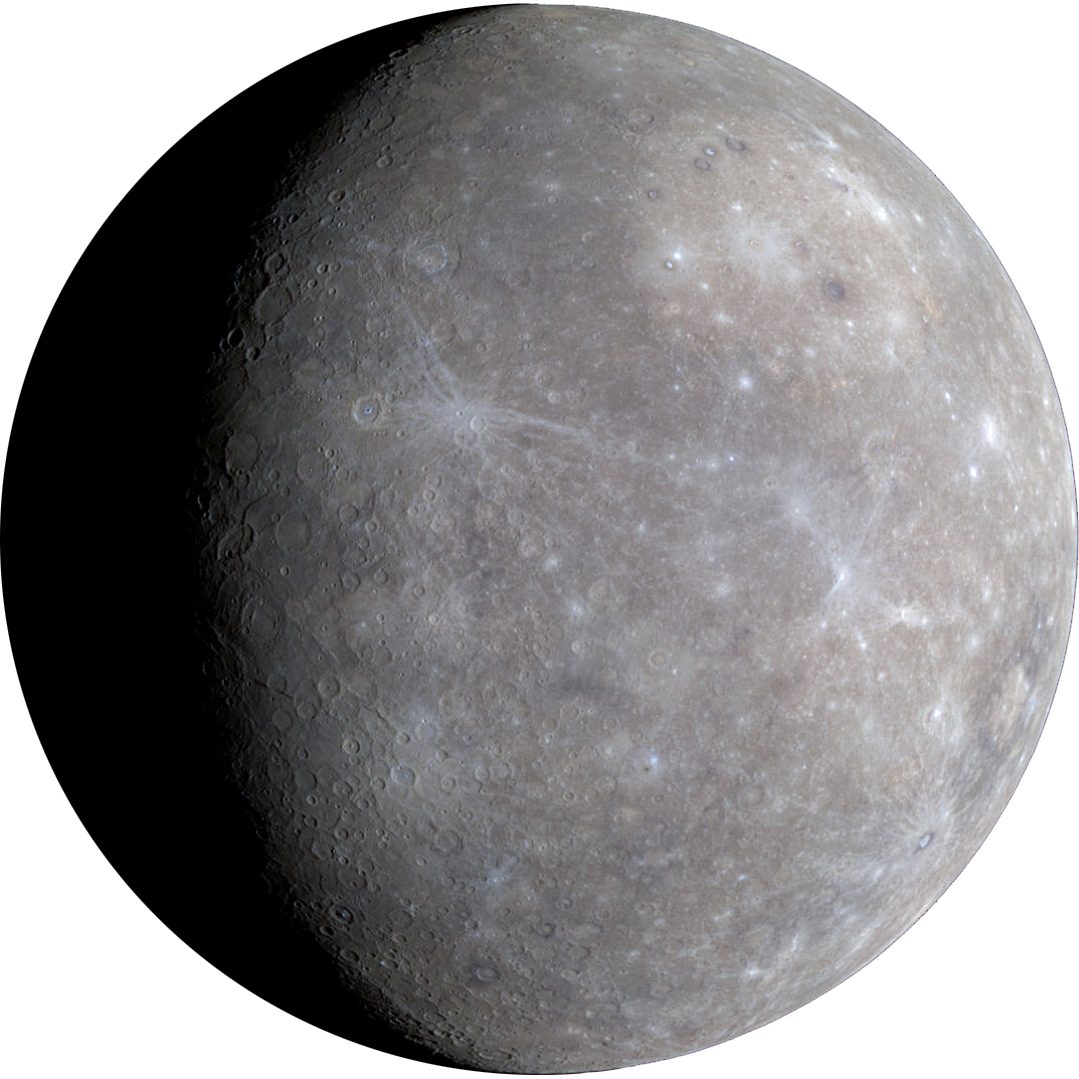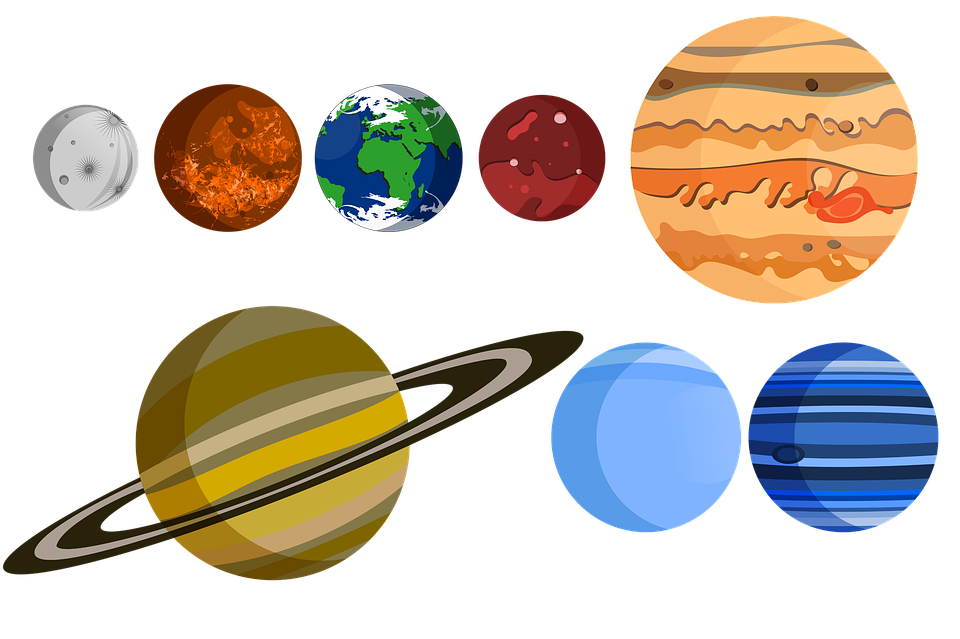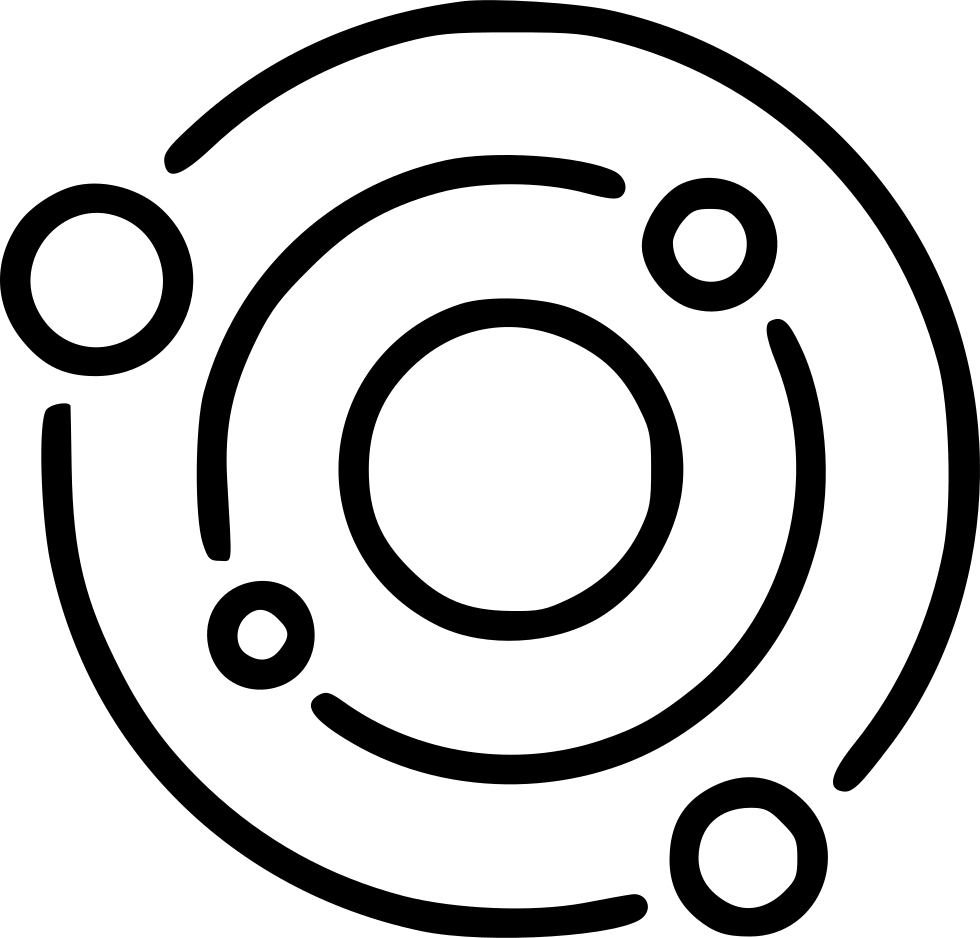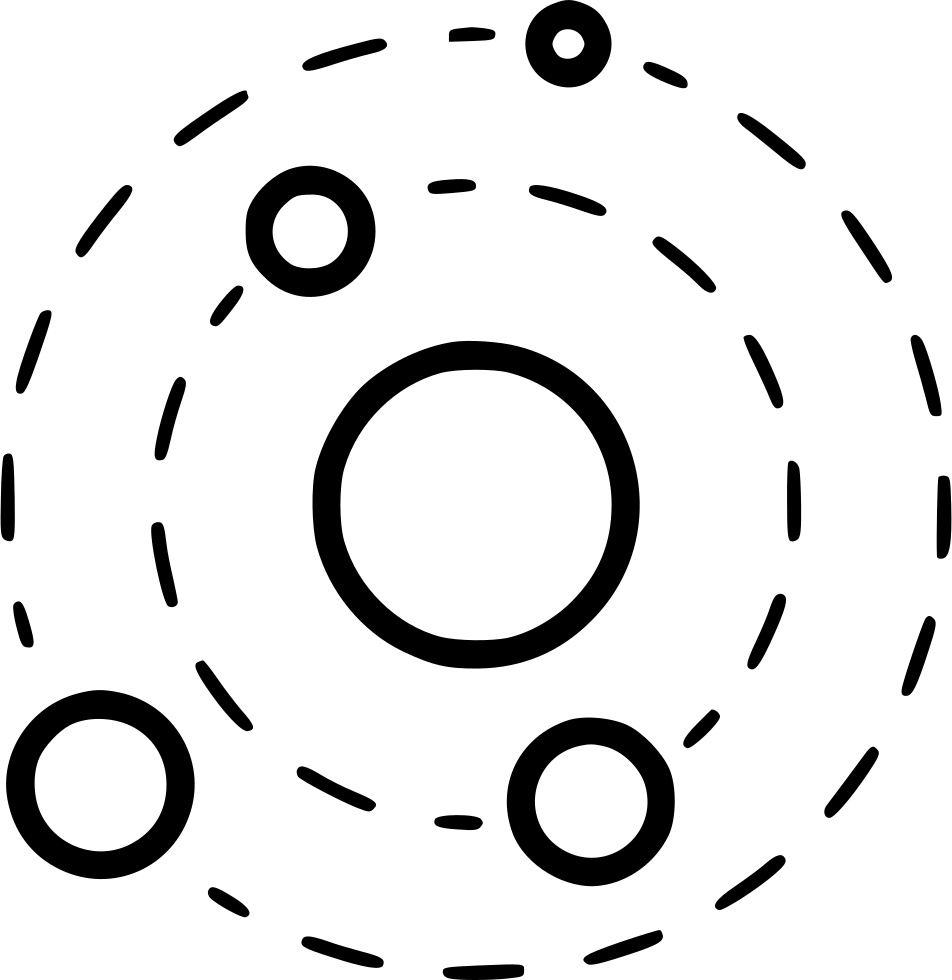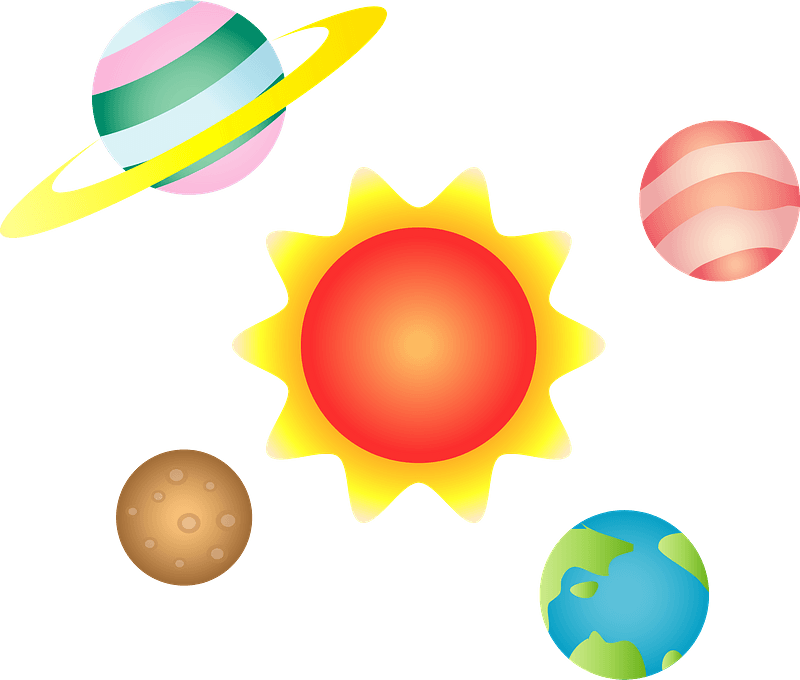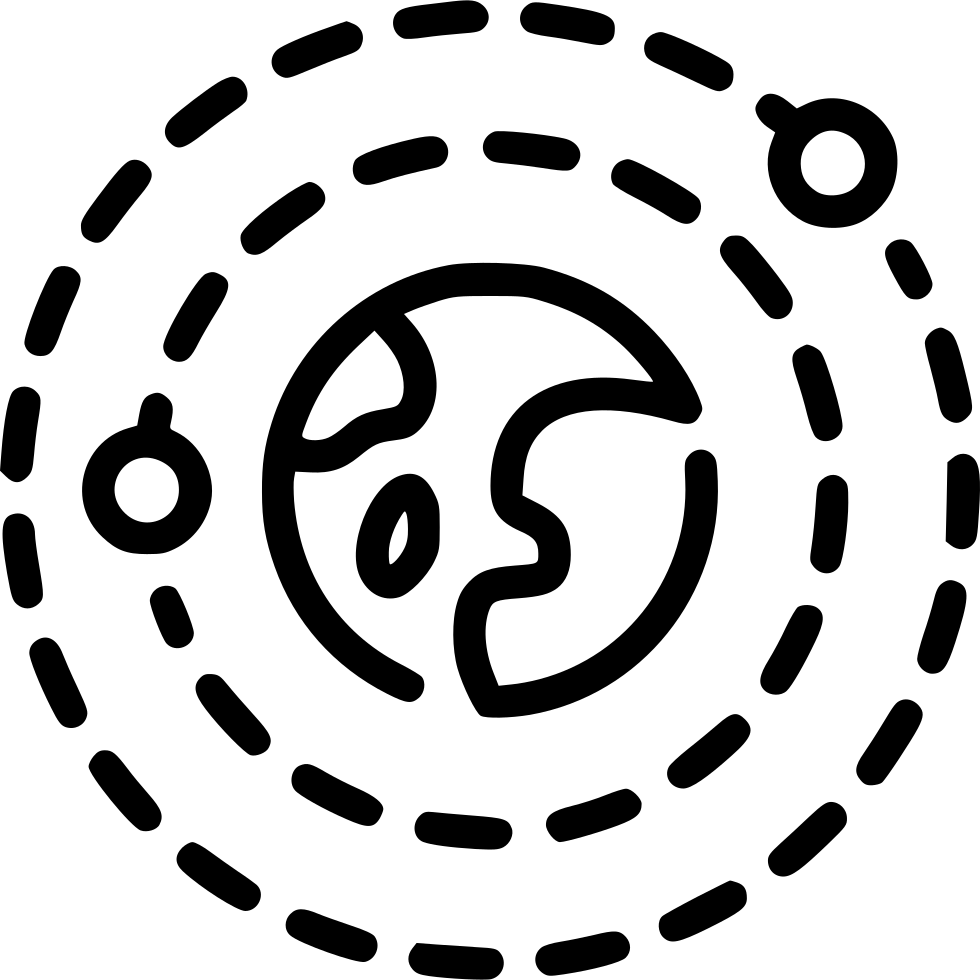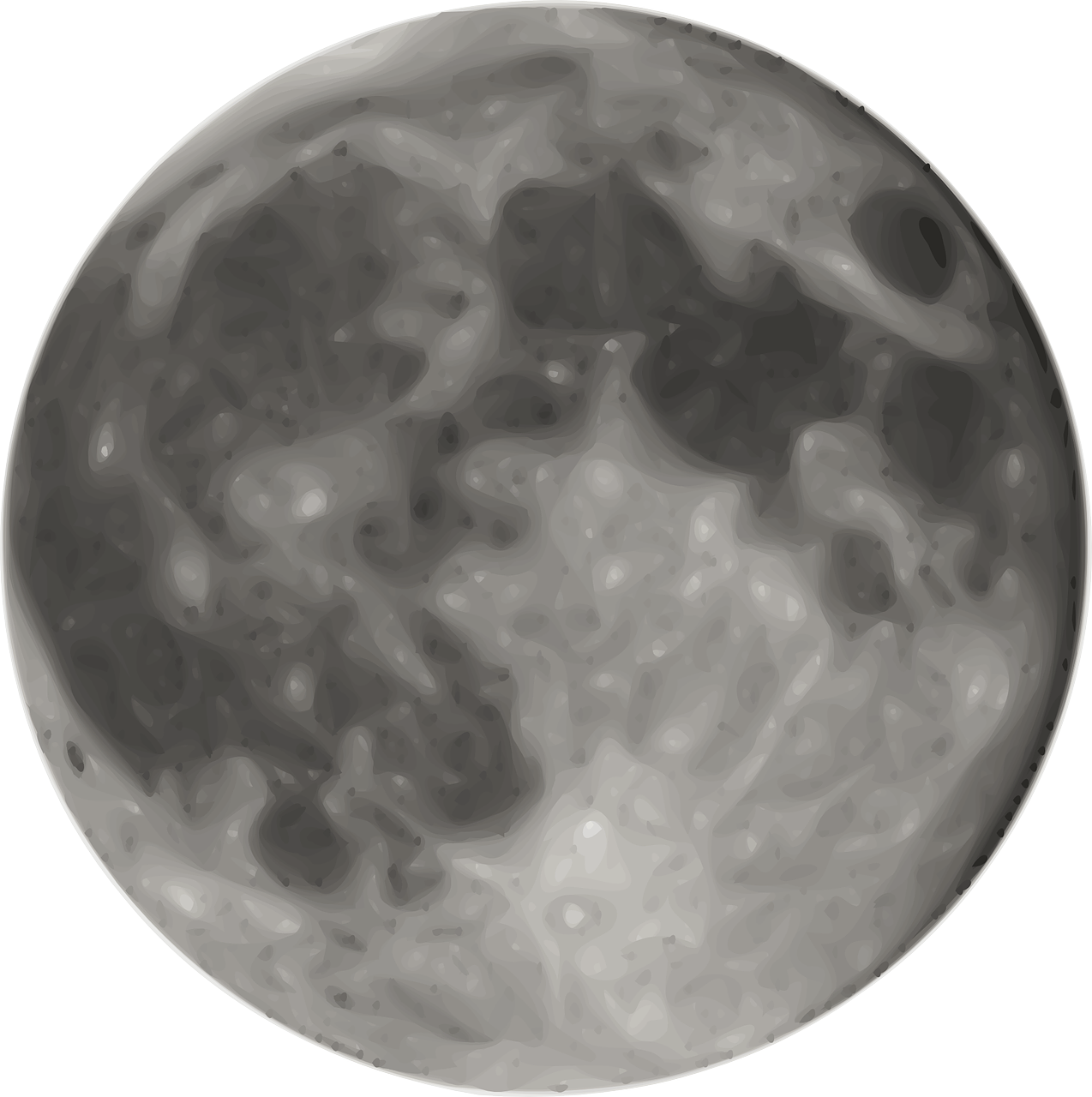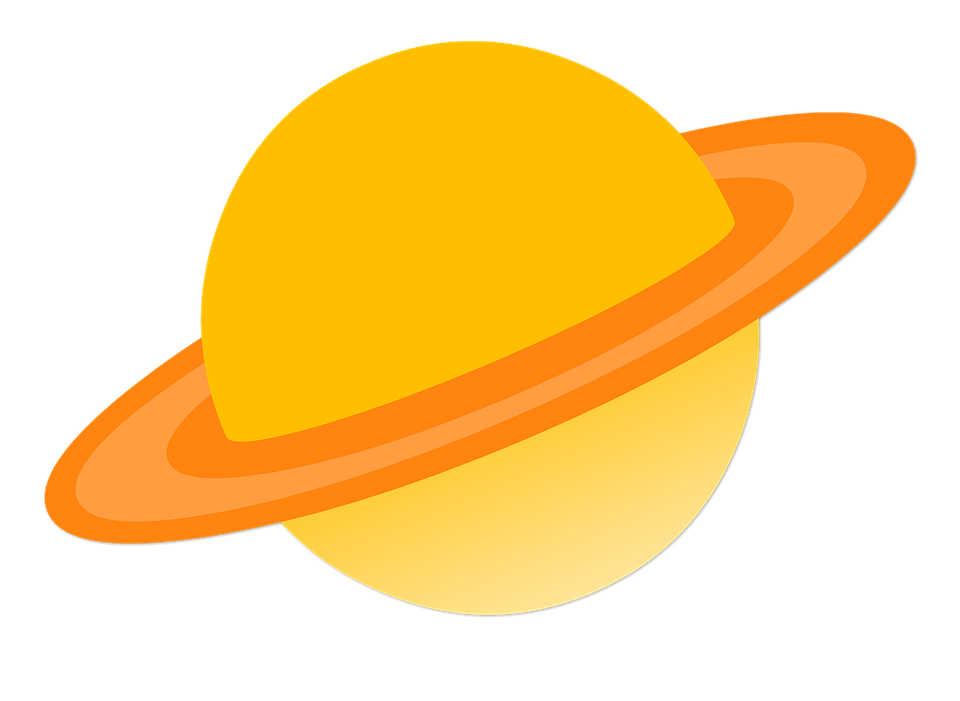Download top and best high-quality free Solar System PNG Transparent Images backgrounds available in various sizes. To view the full PNG size resolution click on any of the below image thumbnail.
License Info: Creative Commons 4.0 BY-NC
The Solar System is the gravitationally bound system comprising the Sun and the objects that directly or indirectly orbit it. The eight planets are the most significant objects that circle the Sun now, with the dwarf planets and small Solar System entities making up the rest. Two of the natural satellites that orbit the Sun indirectly are more significant than Mercury, the minor planet.
The Solar System was created by the gravitational collapse of a massive interstellar molecular cloud 4.6 billion years ago. The Sun holds the great bulk of the system’s mass, with Jupiter holding most of the remaining group. Mercury, Venus, Earth, and Mars, the four more minor inner planets, are terrestrial planets mainly made of rock and metal. The four outer planets are enormous planets, with masses far greater than the terrestrial planets.
The two largest planets, Jupiter and Saturn, are gas giants, consisting primarily of hydrogen and helium; the two outermost planets, Uranus and Neptune, are ice giants, consisting primarily of volatiles, such as water, ammonia, and methane, with relatively high melting points compared to hydrogen and helium. The orbits of all eight planets are roughly round and sit inside a nearly flat disc known as the ecliptic.
Smaller objects can also be found in the Solar System. The asteroid belt, which sits between Mars and Jupiter’s orbits, is primarily composed of rock and metal objects, similar to the terrestrial planets. The Kuiper belt and dispersed disc, populations of trans-Neptunian objects mainly made of ices, reside beyond Neptune’s orbit, as does a newly discovered population of sednoids.
Some objects among these populations are massive enough to have rounded under their gravity, however how many there will be is a matter of contention. Dwarf planets are the name given to such objects. Pluto is the only dwarf planet known to exist, but another trans-Neptunian object, Eris, is suspected to be one, and the asteroid Ceres is at least near to being one.
Other small-body populations, like comets, centaurs, and interplanetary dust clouds, freely move between these two areas in addition two. Natural satellites circle six of the planets, the six biggest potential dwarf planets, and many of the smaller bodies, which are commonly referred to as “moons” after the Moon. Planetary rings of dust and other tiny particles encircle each of the outer planets.
The heliosphere is a bubble-like area in the interstellar medium created by the solar wind, a stream of charged particles streaming outwards from the Sun. The heliopause, which stretches out to the edge of the dispersed disc, is the point where the solar wind’s pressure equals the negative pressure of the interstellar medium.
The Oort cloud, which is considered the source of long-period comets, might be thousands of times farther away than the heliosphere. The Solar System is approximately 26,000 light-years from the Milky Way’s core in the Orion Arm.
Humanity did not perceive or comprehend the idea of the Solar System for the majority of its existence. Most people thought that Earth was immobile at the centre of the cosmos until the Late Middle Ages–Renaissance and that it was distinct from the divine or ethereal things that traveled through the sky.
Nicolaus Copernicus was the first to construct a mathematically predicted heliocentric theory, even though Greek philosopher Aristarchus of Samos had theorized on a heliocentric rearrangement of the universe.
Download Solar System PNG images transparent gallery.
- Solar System Transparent File
Resolution: 680 × 678
Size: 33 KB
Image Format: .png
Download
- Solar System Download Free PNG
Resolution: 667 × 800
Size: 457 KB
Image Format: .png
Download
- Solar System PNG Free Download
Resolution: 800 × 800
Size: 391 KB
Image Format: .png
Download
- Solar System PNG HD Background
Resolution: 800 × 385
Size: 434 KB
Image Format: .png
Download
- Solar System Transparent Image
Resolution: 800 × 756
Size: 841 KB
Image Format: .png
Download
- Solar System
Resolution: 2289 × 1665
Size: 1897 KB
Image Format: .png
Download
- Solar System PNG Photos
Resolution: 2910 × 750
Size: 1345 KB
Image Format: .png
Download
- Solar System No Background
Resolution: 1252 × 1252
Size: 527 KB
Image Format: .png
Download
- Solar System Planet PNG Image HD
Resolution: 960 × 416
Size: 342 KB
Image Format: .png
Download
- Solar System PNG Photo Image
Resolution: 2000 × 1125
Size: 1824 KB
Image Format: .png
Download
- Solar System PNG Download Image
Resolution: 1200 × 810
Size: 369 KB
Image Format: .png
Download
- Solar System PNG
Resolution: 5848 × 1874
Size: 1694 KB
Image Format: .png
Download
- Solar System Silhouette
Resolution: 2289 × 2400
Size: 265 KB
Image Format: .png
Download
- Solar System PNG Pic
Resolution: 1300 × 1300
Size: 546 KB
Image Format: .png
Download
- Solar System PNG File
Resolution: 1250 × 1250
Size: 619 KB
Image Format: .png
Download
- Solar System Planet PNG
Resolution: 1280 × 1233
Size: 1023 KB
Image Format: .png
Download
- Solar System Planet PNG Pic
Resolution: 1280 × 773
Size: 336 KB
Image Format: .png
Download
- Solar System Planet PNG File
Resolution: 1280 × 1258
Size: 467 KB
Image Format: .png
Download
- Solar System Planet PNG Image
Resolution: 1200 × 1200
Size: 451 KB
Image Format: .png
Download
- Solar System Planet PNG Photo
Resolution: 4096 × 4096
Size: 508 KB
Image Format: .png
Download
- Solar System PNG Image
Resolution: 1344 × 849
Size: 260 KB
Image Format: .png
Download
- Solar System PNG Photo
Resolution: 1392 × 1234
Size: 175 KB
Image Format: .png
Download
- Solar System PNG Cutout
Resolution: 782 × 801
Size: 166 KB
Image Format: .png
Download
- Solar System Planet
Resolution: 1025 × 1025
Size: 47 KB
Image Format: .png
Download
- Solar System PNG Images
Resolution: 1332 × 511
Size: 97 KB
Image Format: .png
Download
- Solar System Planet PNG Cutout
Resolution: 878 × 876
Size: 1132 KB
Image Format: .png
Download
- Solar System Planet PNG Images
Resolution: 897 × 509
Size: 306 KB
Image Format: .png
Download
- Solar System Transparent
Resolution: 2215 × 2195
Size: 186 KB
Image Format: .png
Download
- Solar System PNG Clipart
Resolution: 850 × 600
Size: 236 KB
Image Format: .png
Download
- Solar System PNG Picture
Resolution: 1280 × 1269
Size: 206 KB
Image Format: .png
Download
- Solar System PNG HD Image
Resolution: 800 × 538
Size: 64 KB
Image Format: .png
Download
- Solar System Planet PNG Photos
Resolution: 1280 × 1280
Size: 823 KB
Image Format: .png
Download
- Solar System Silhouette PNG
Resolution: 845 × 879
Size: 67 KB
Image Format: .png
Download
- Solar System PNG Image HD
Resolution: 800 × 565
Size: 319 KB
Image Format: .png
Download
- Solar System Planet Transparent
Resolution: 813 × 813
Size: 1336 KB
Image Format: .png
Download
- Solar System PNG Images HD
Resolution: 1058 × 800
Size: 116 KB
Image Format: .png
Download
- Solar System PNG Free Image
Resolution: 3547 × 3546
Size: 318 KB
Image Format: .png
Download
- Solar System Planet PNG Clipart
Resolution: 660 × 660
Size: 544 KB
Image Format: .png
Download
- Solar System Silhouette PNG Pic
Resolution: 980 × 982
Size: 118 KB
Image Format: .png
Download
- Solar System PNG Image File
Resolution: 758 × 750
Size: 188 KB
Image Format: .png
Download
- Solar System Background PNG
Resolution: 1920 × 1756
Size: 135 KB
Image Format: .png
Download
- Solar System Planet PNG Picture
Resolution: 1491 × 1004
Size: 106 KB
Image Format: .png
Download
- Solar System Planet PNG HD Image
Resolution: 1280 × 759
Size: 146 KB
Image Format: .png
Download
- Solar System Planet No Background
Resolution: 1079 × 1079
Size: 1093 KB
Image Format: .png
Download
- Solar System PNG Background
Resolution: 960 × 639
Size: 260 KB
Image Format: .png
Download
- Solar System Silhouette PNG File
Resolution: 980 × 938
Size: 51 KB
Image Format: .png
Download
- Solar System Silhouette PNG Image
Resolution: 952 × 402
Size: 17 KB
Image Format: .png
Download
- Solar System Silhouette PNG Photo
Resolution: 952 × 980
Size: 44 KB
Image Format: .png
Download
- Solar System PNG HD Quality
Resolution: 800 × 680
Size: 42 KB
Image Format: .png
Download
- Solar System Silhouette PNG Cutout
Resolution: 980 × 980
Size: 59 KB
Image Format: .png
Download
- Solar System Planet PNG Images HD
Resolution: 1274 × 1280
Size: 739 KB
Image Format: .png
Download
- Solar System Transparent PNG
Resolution: 1406 × 450
Size: 189 KB
Image Format: .png
Download
- Solar System Planet PNG Free Image
Resolution: 960 × 701
Size: 77 KB
Image Format: .png
Download
